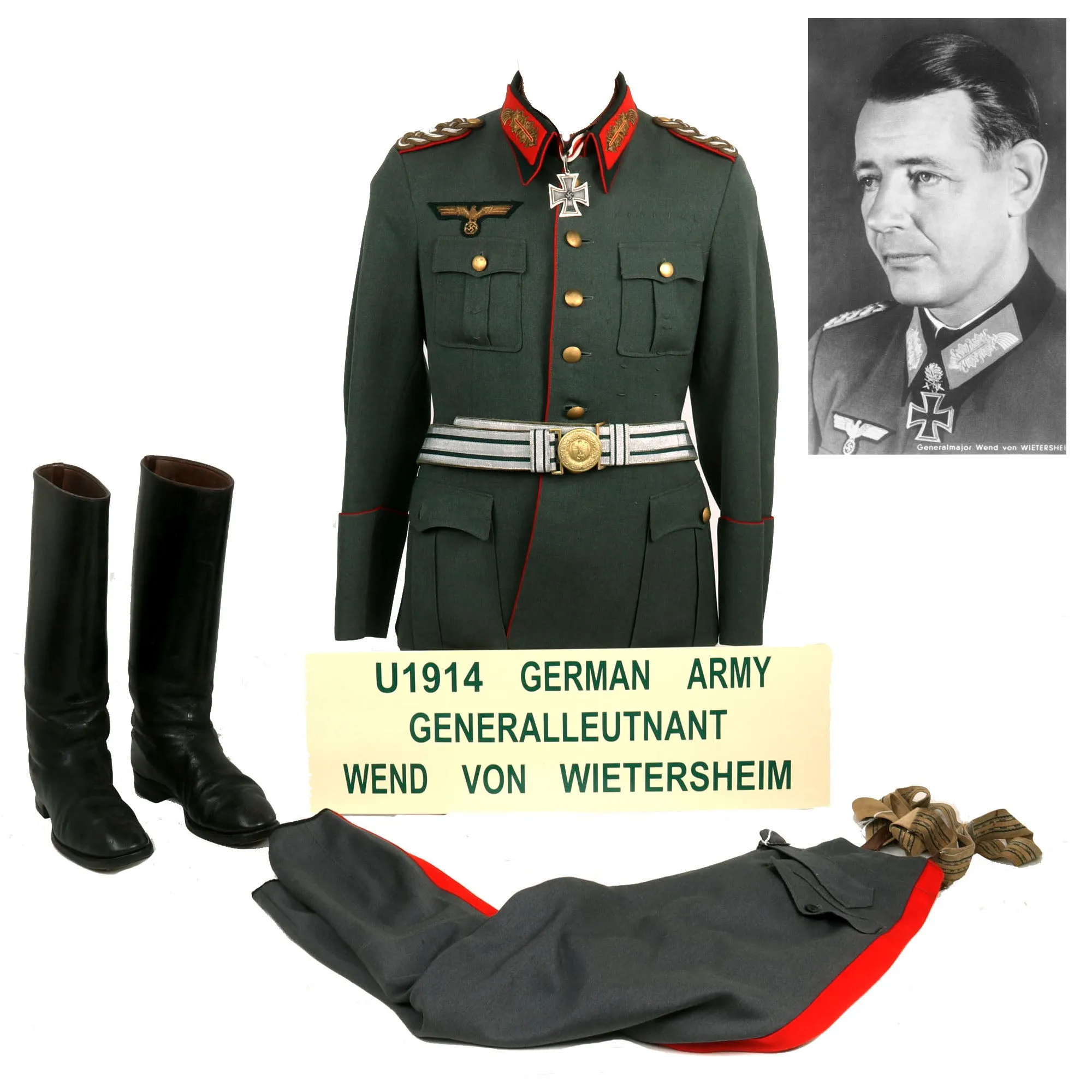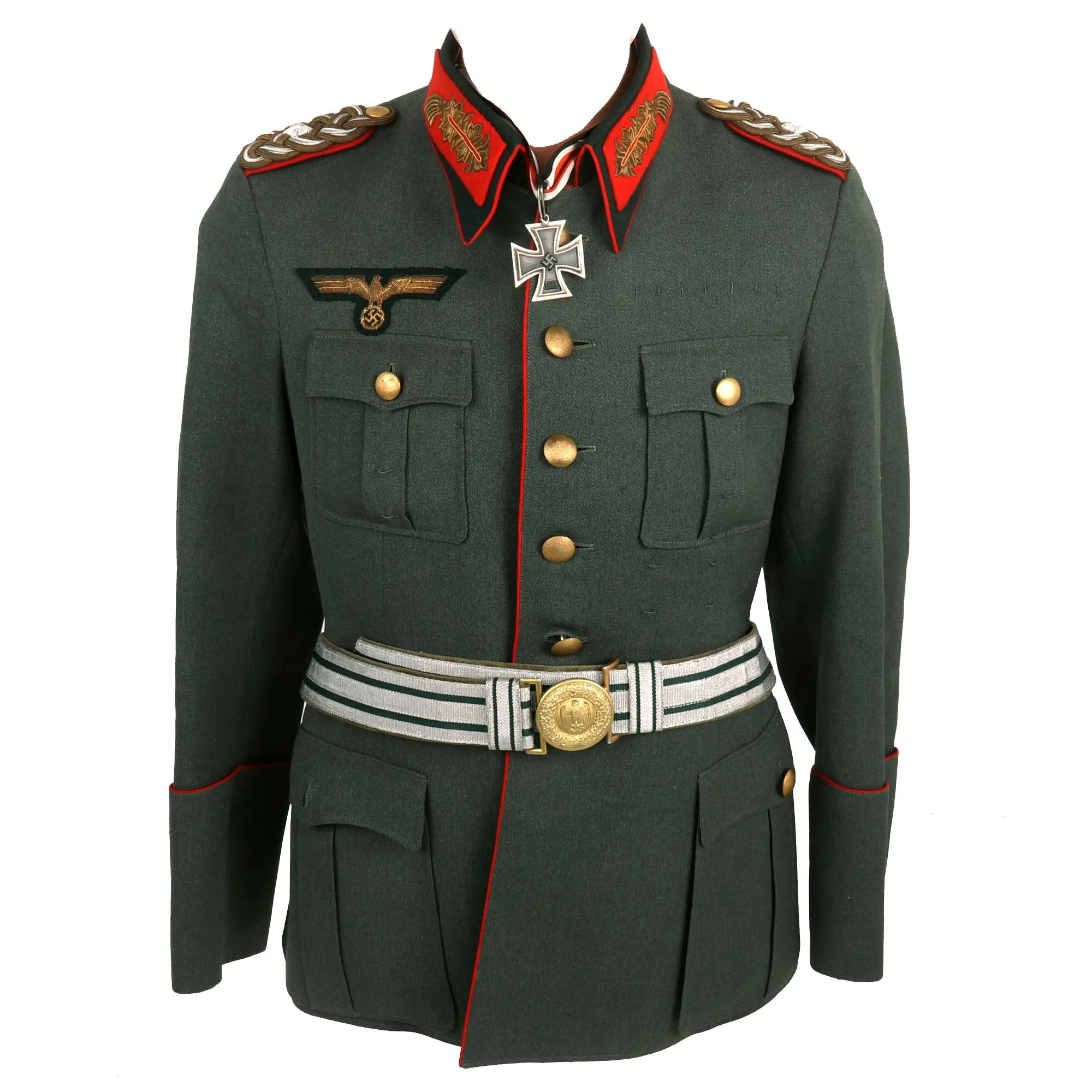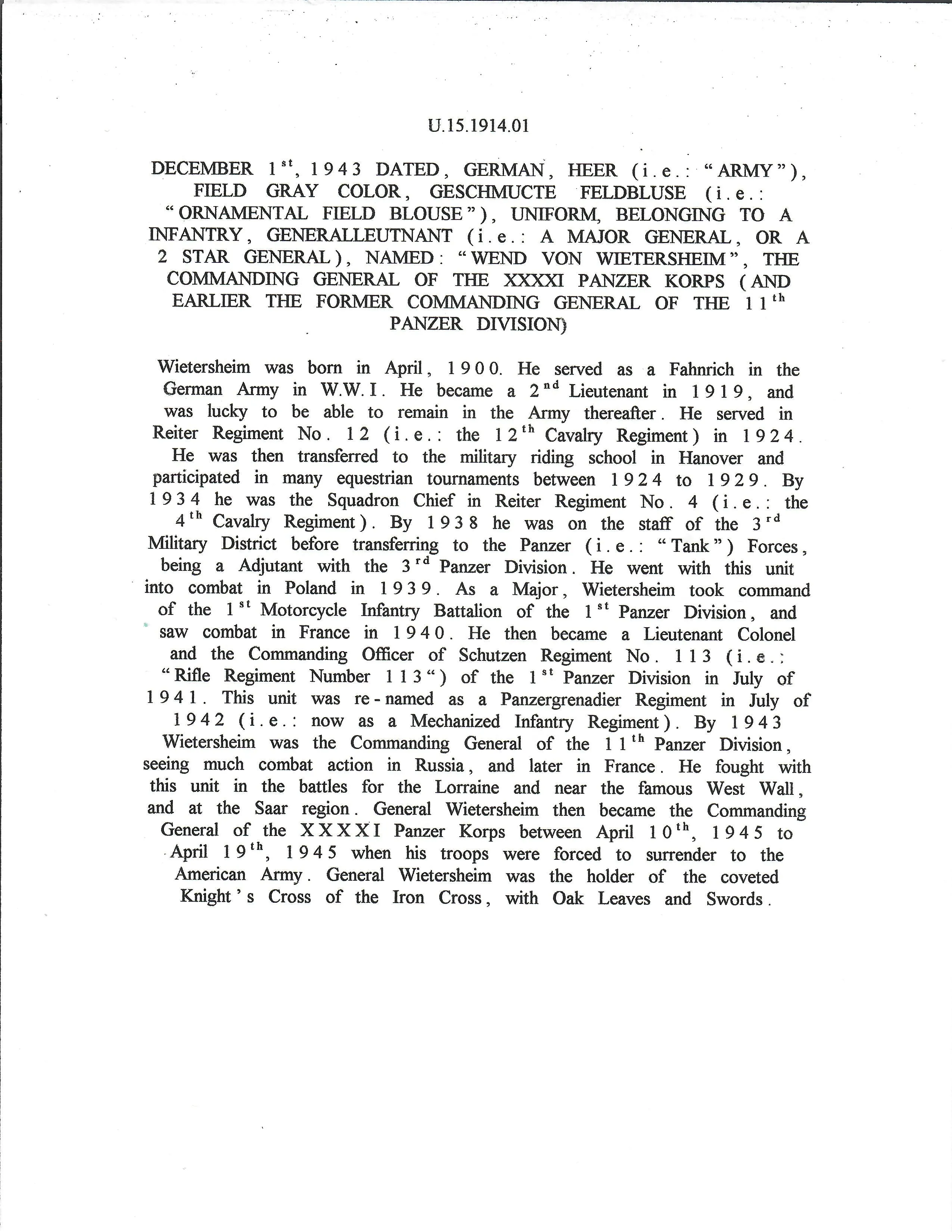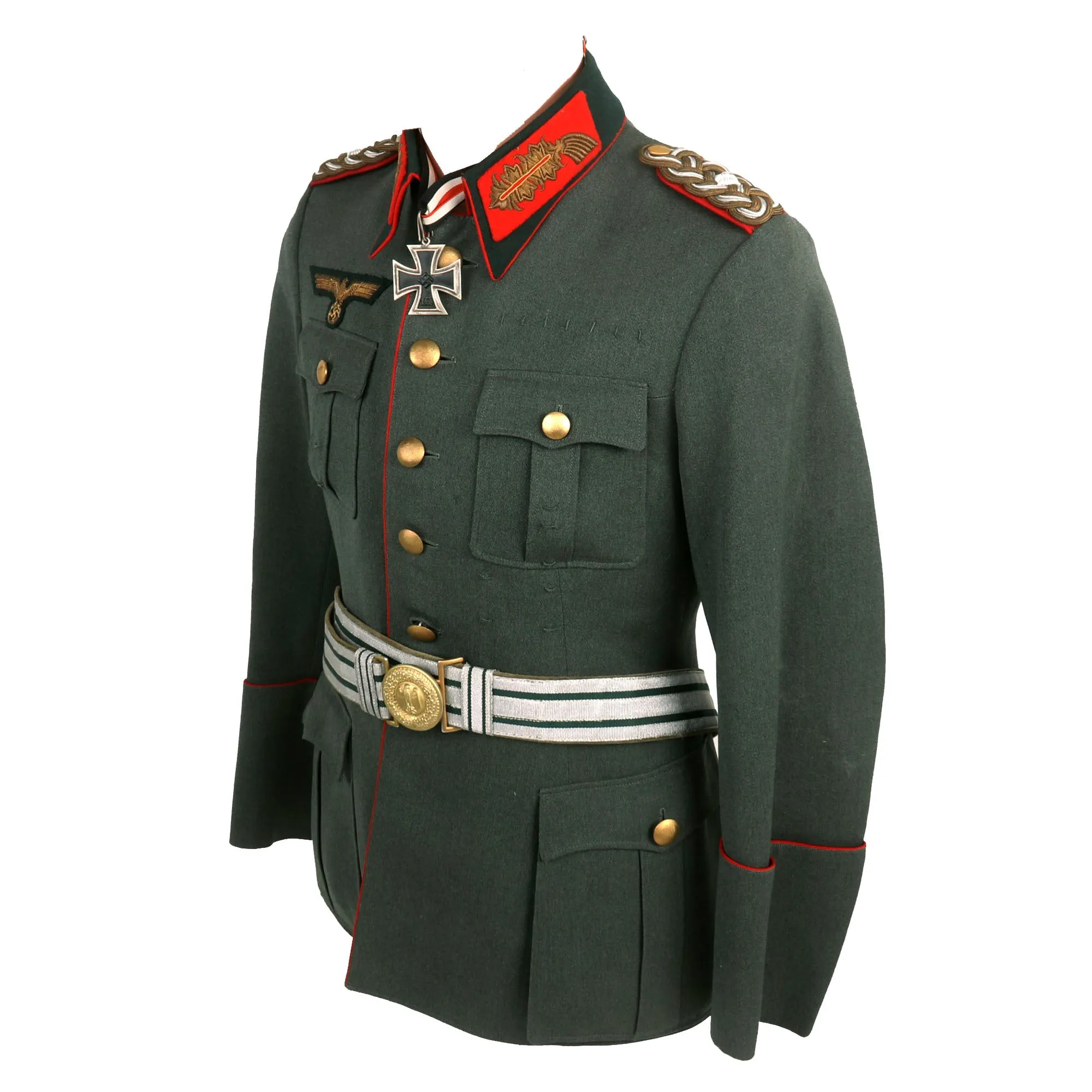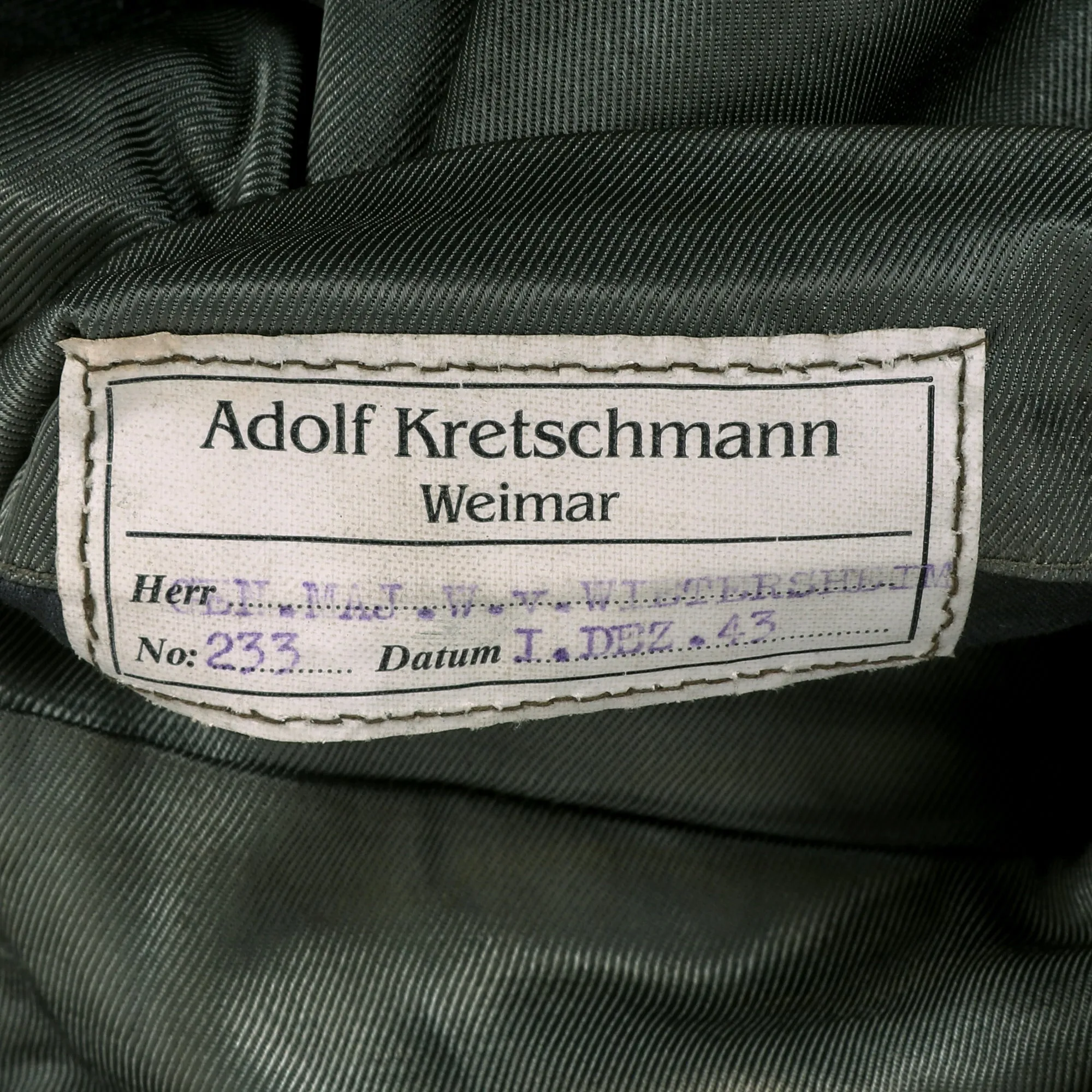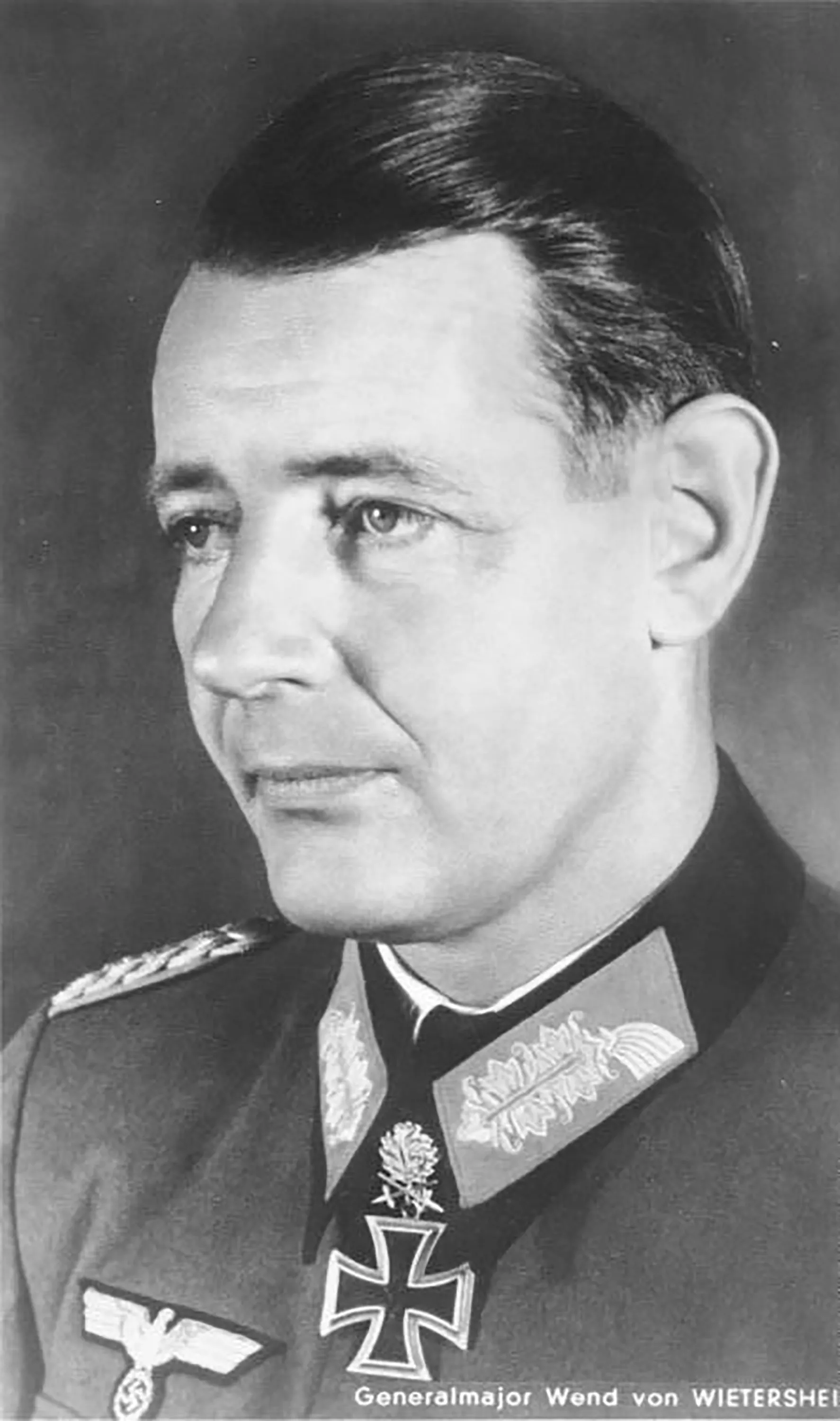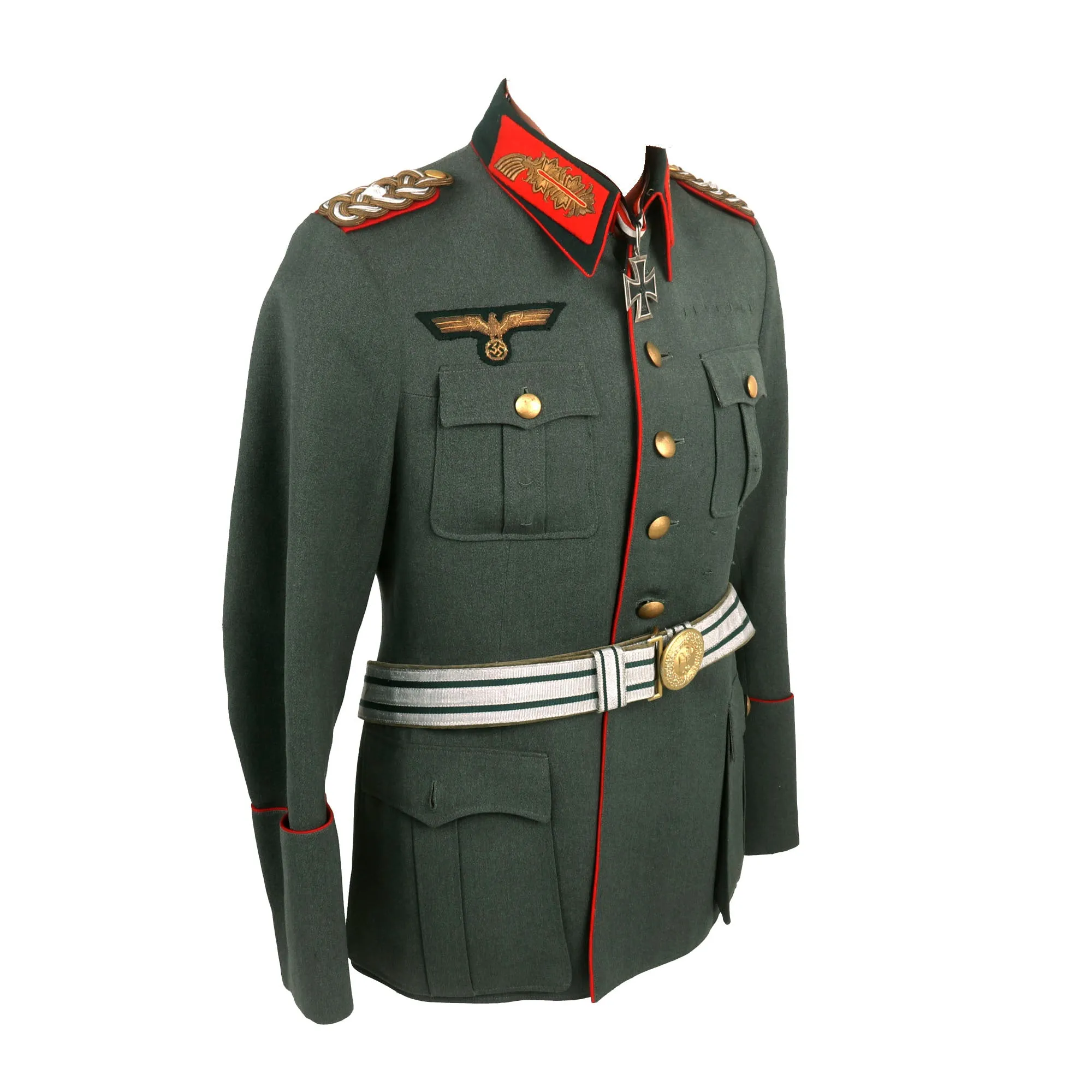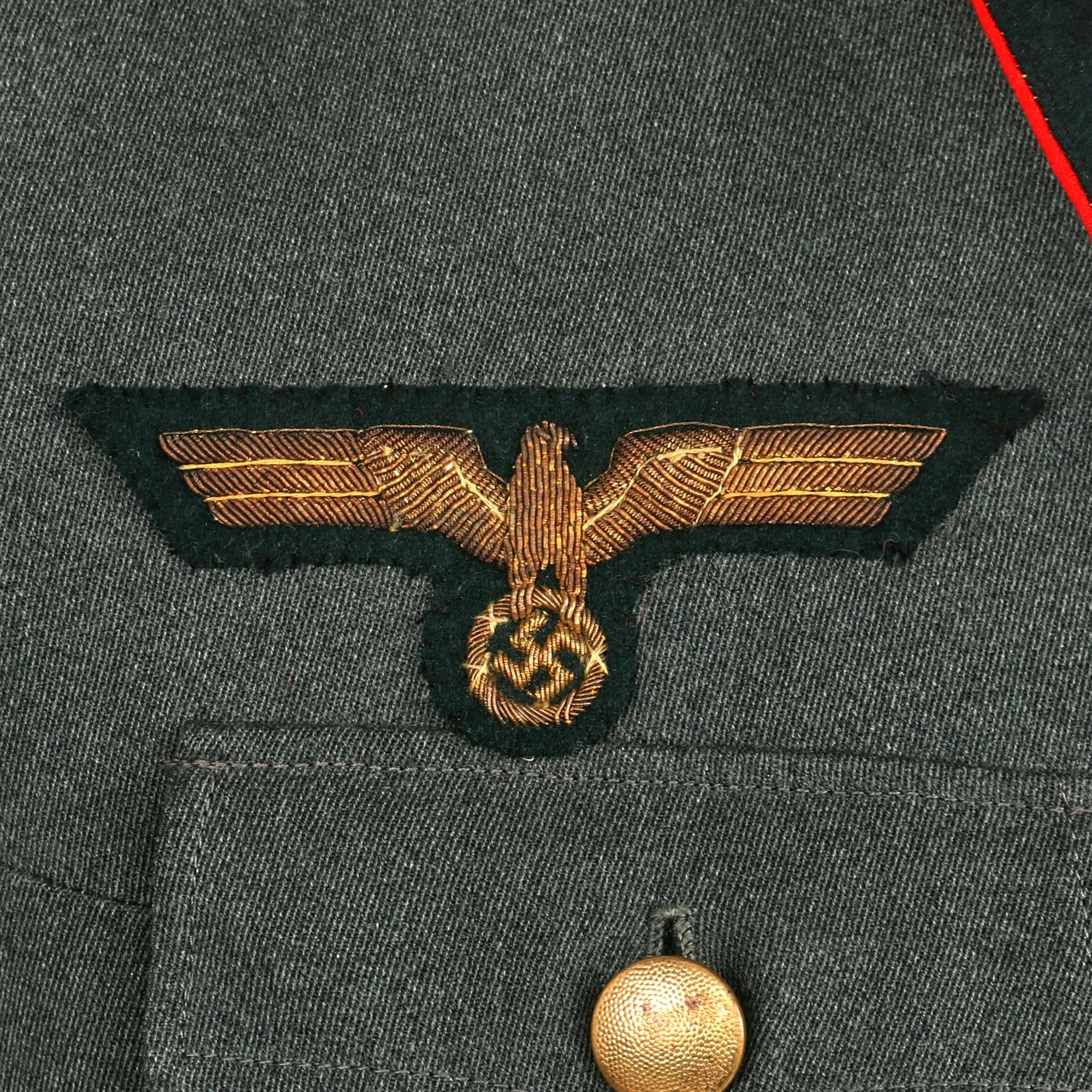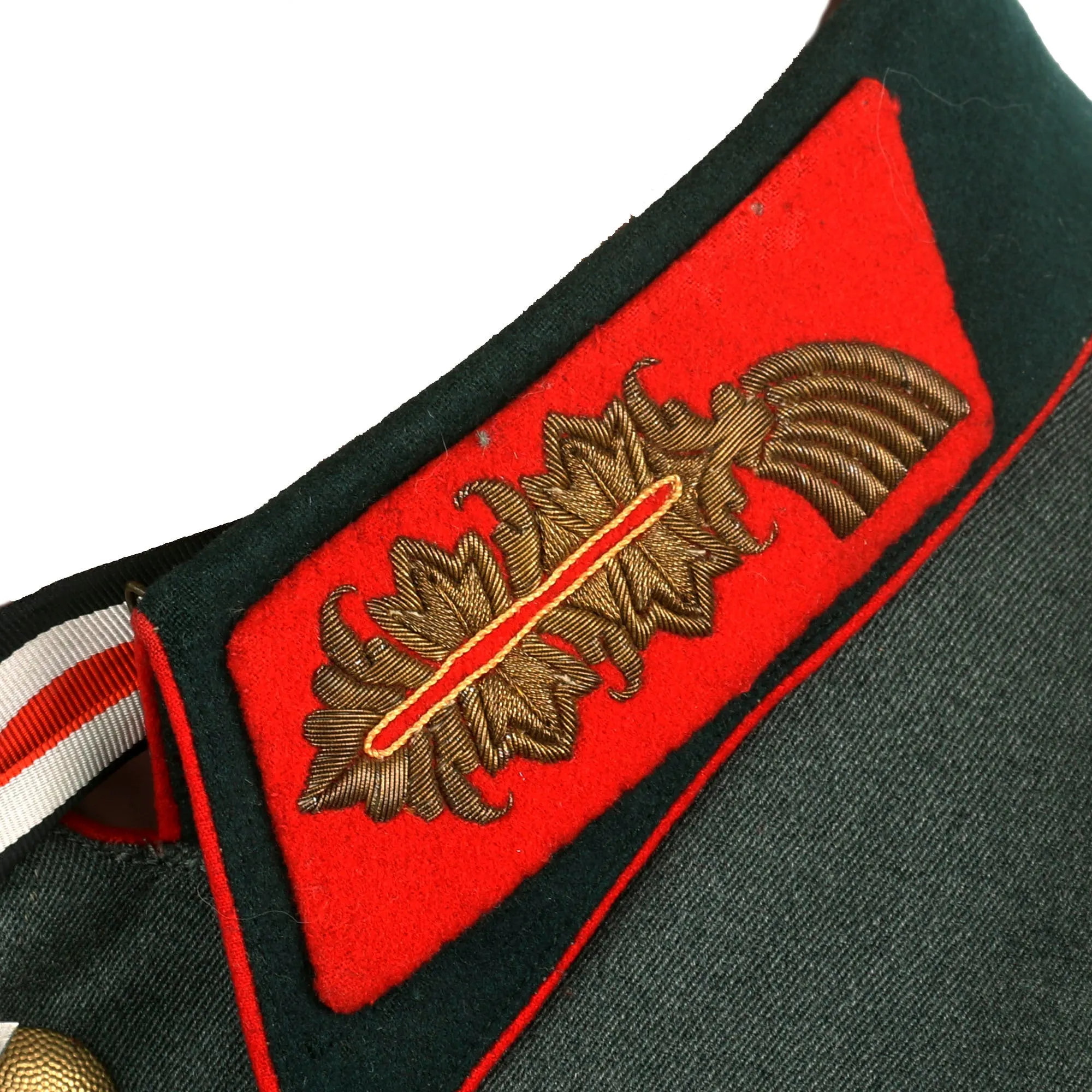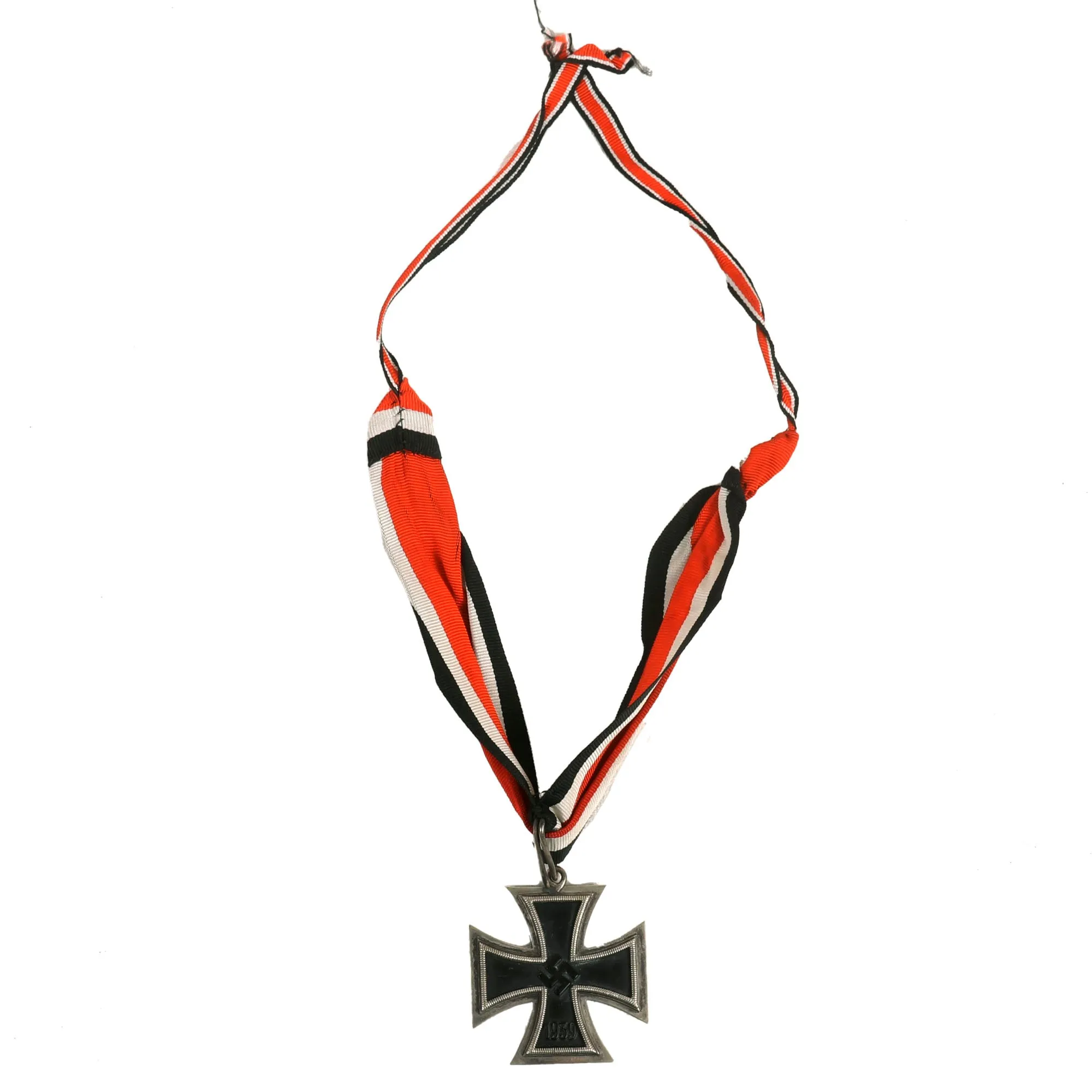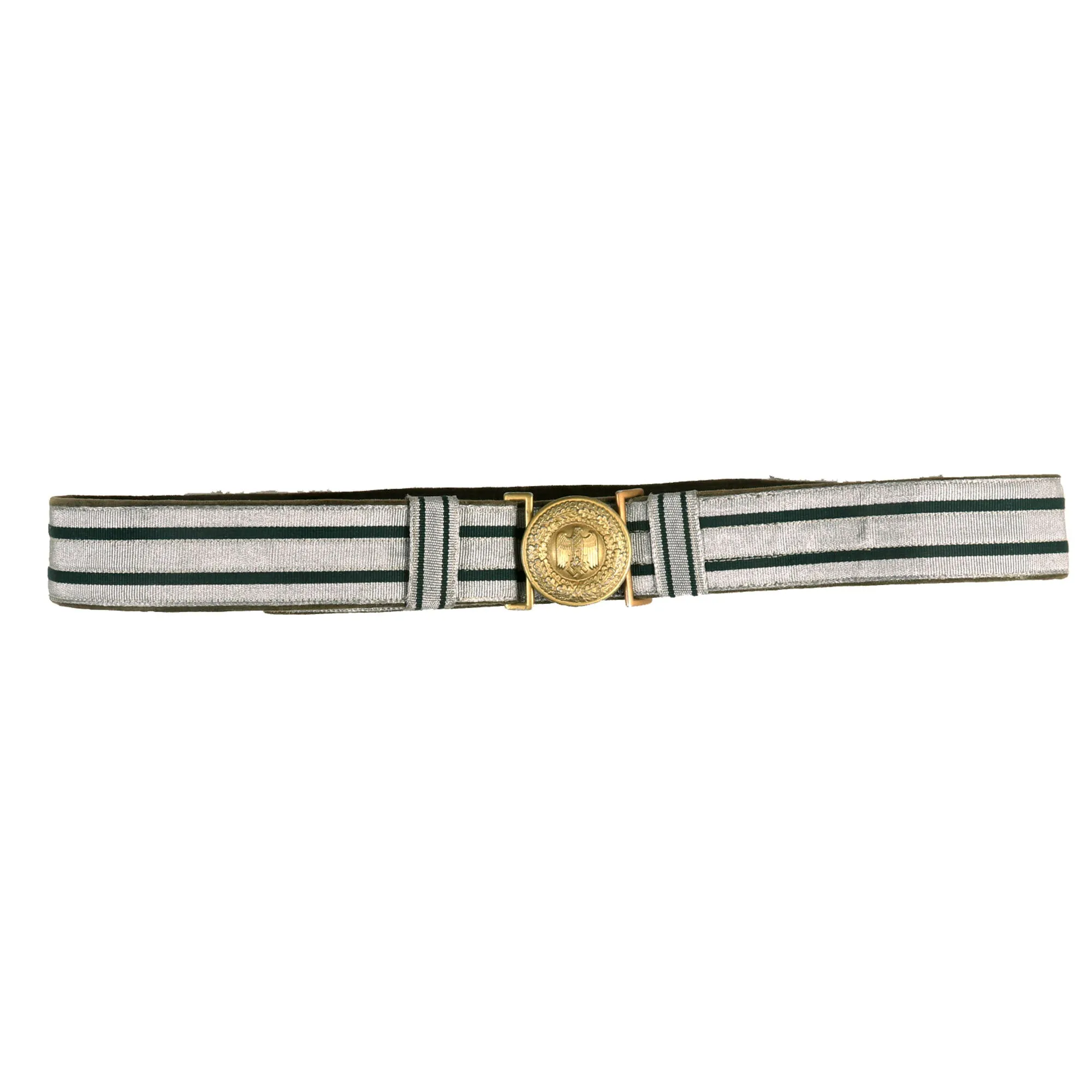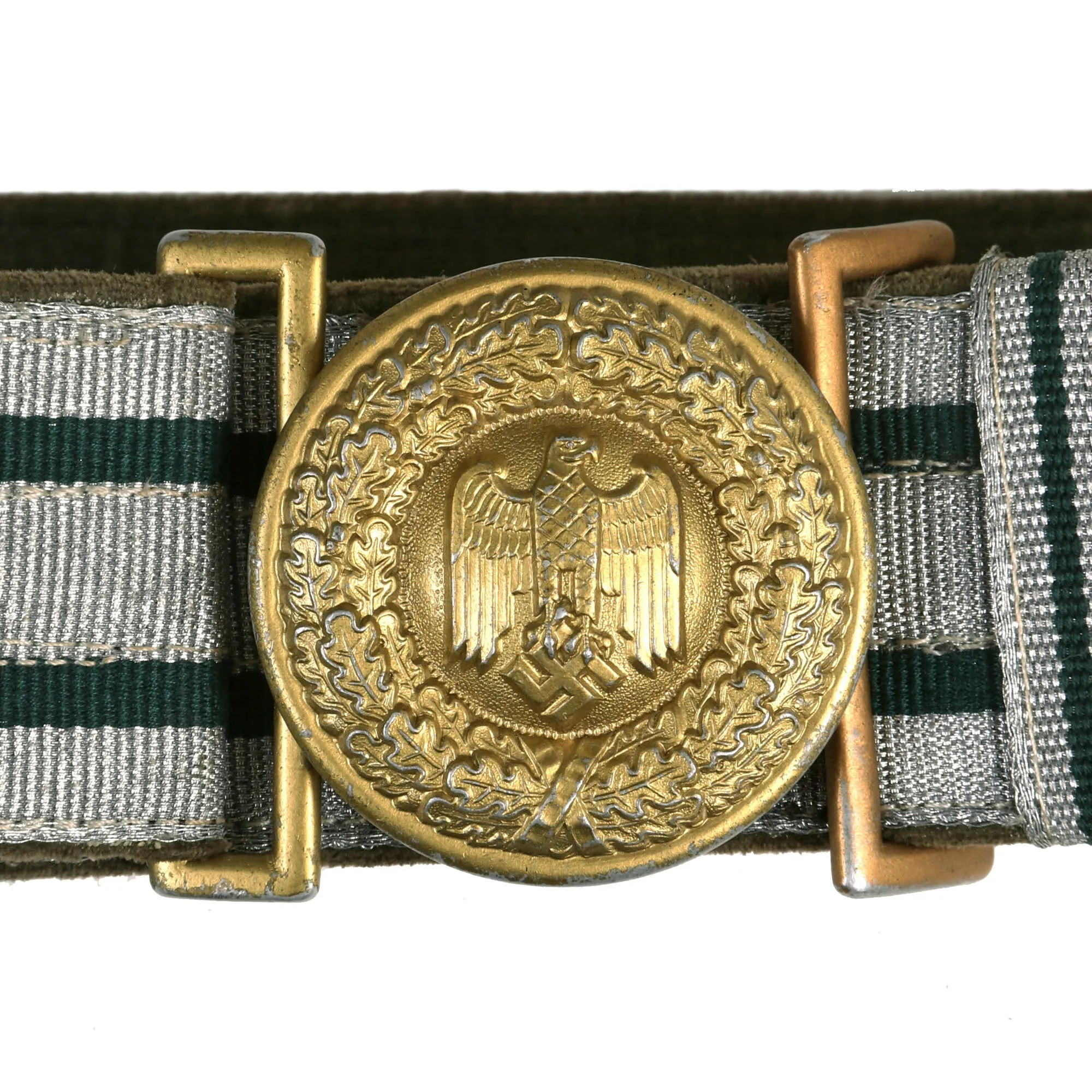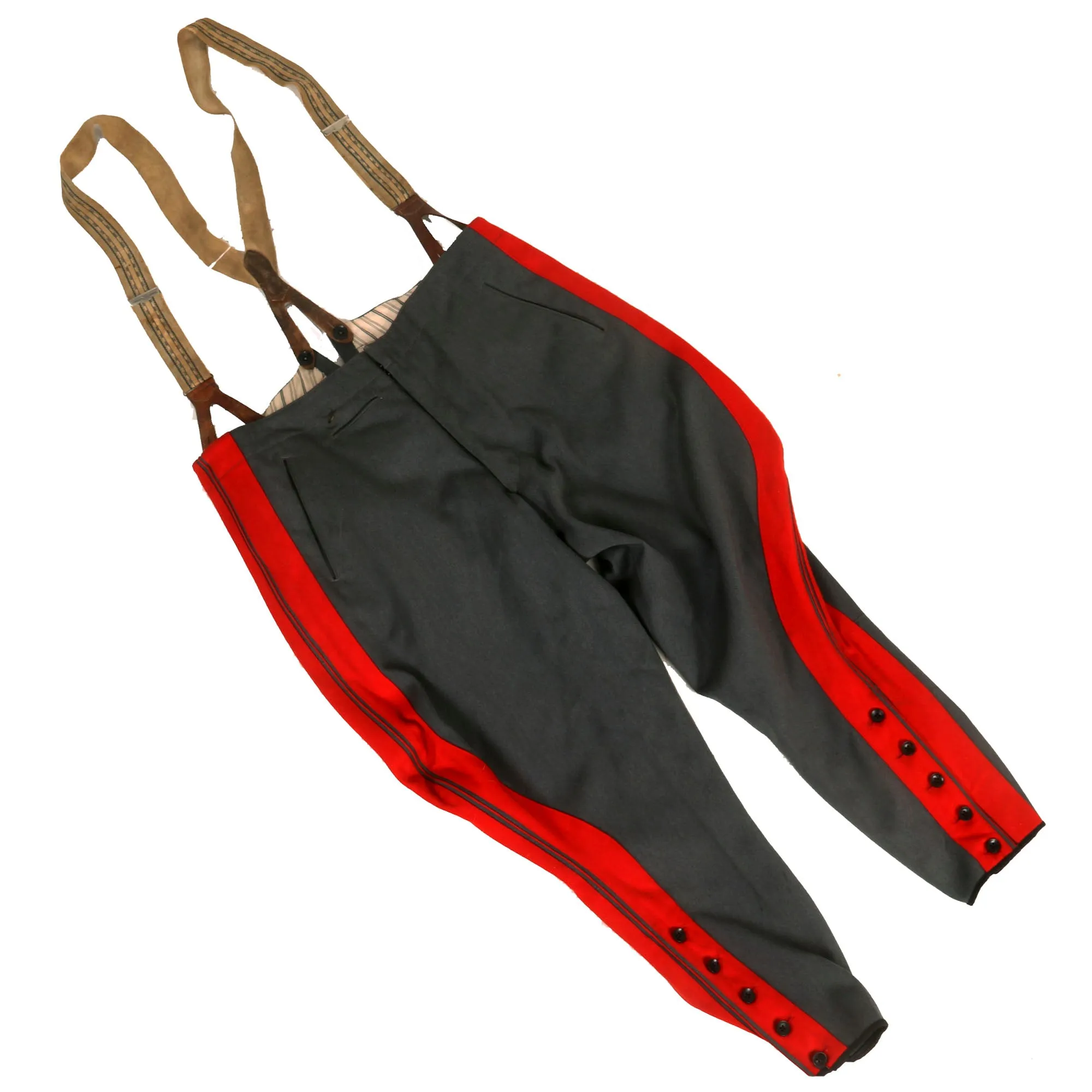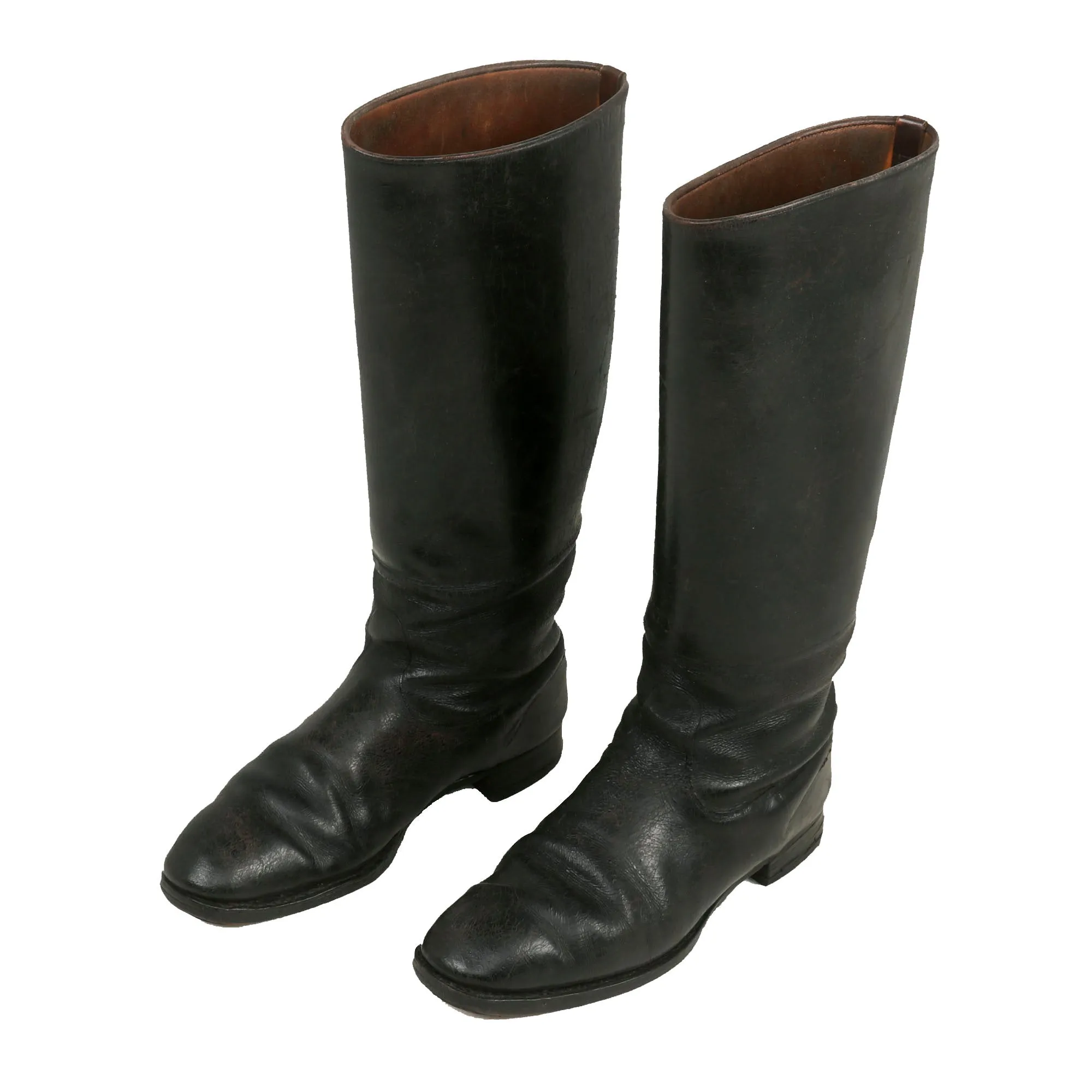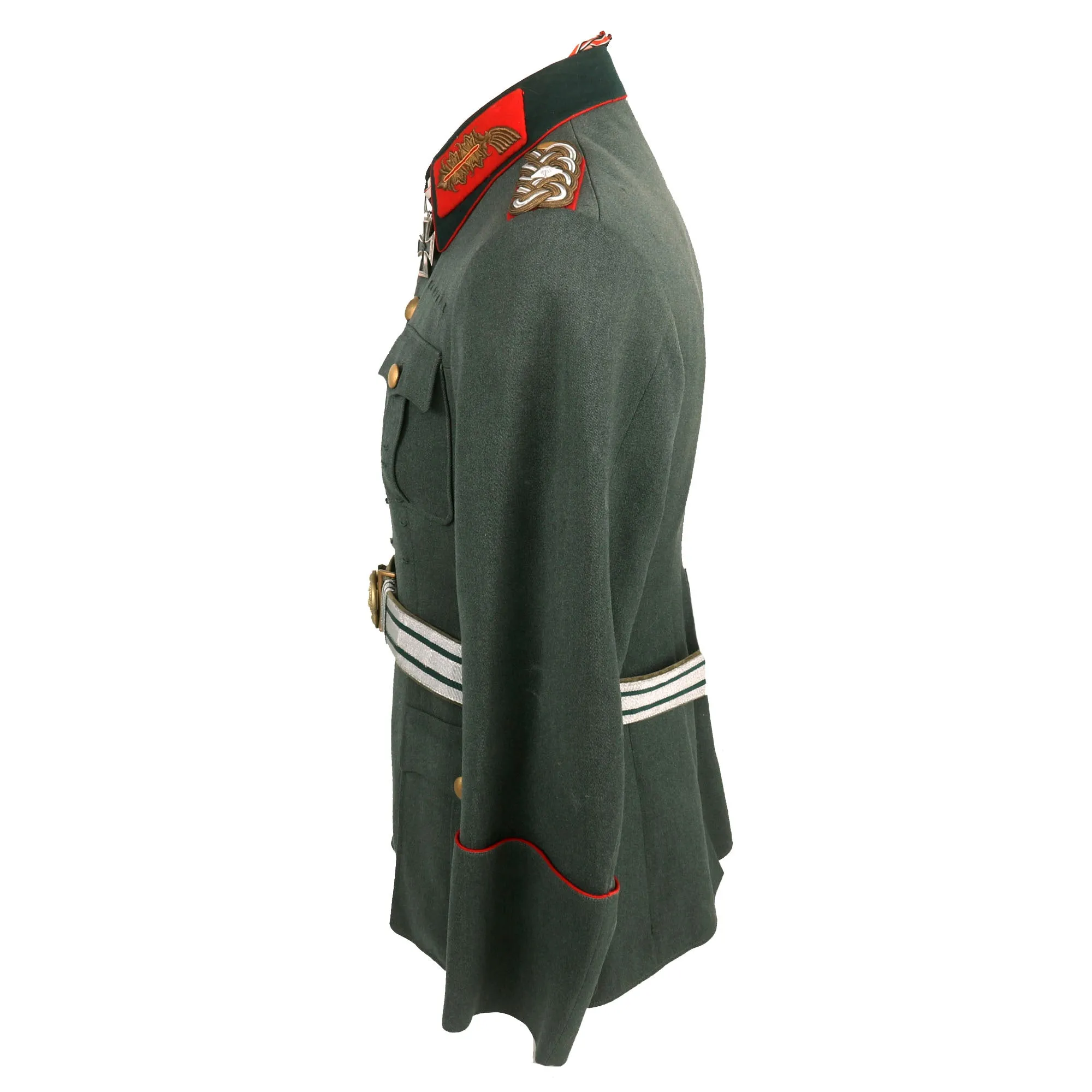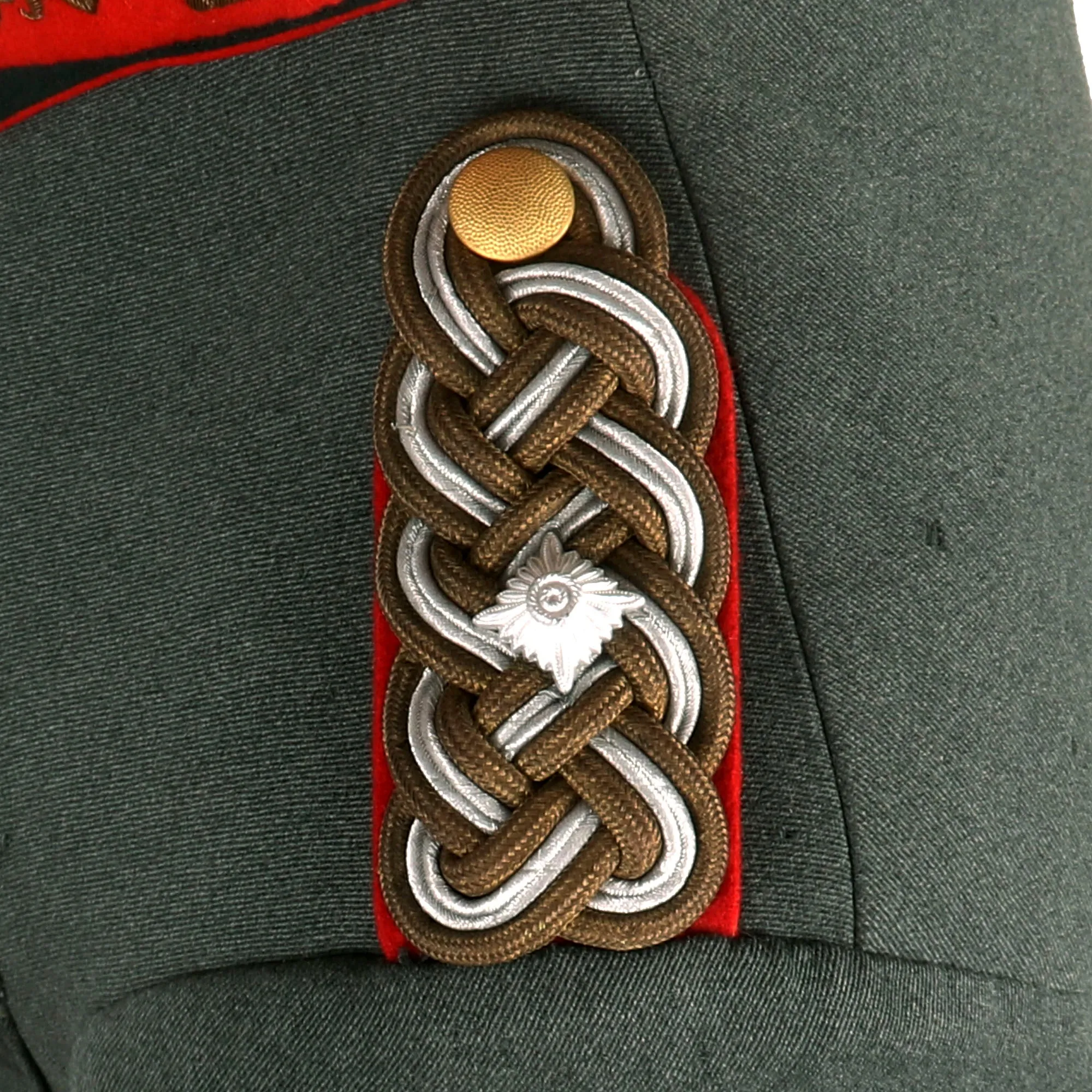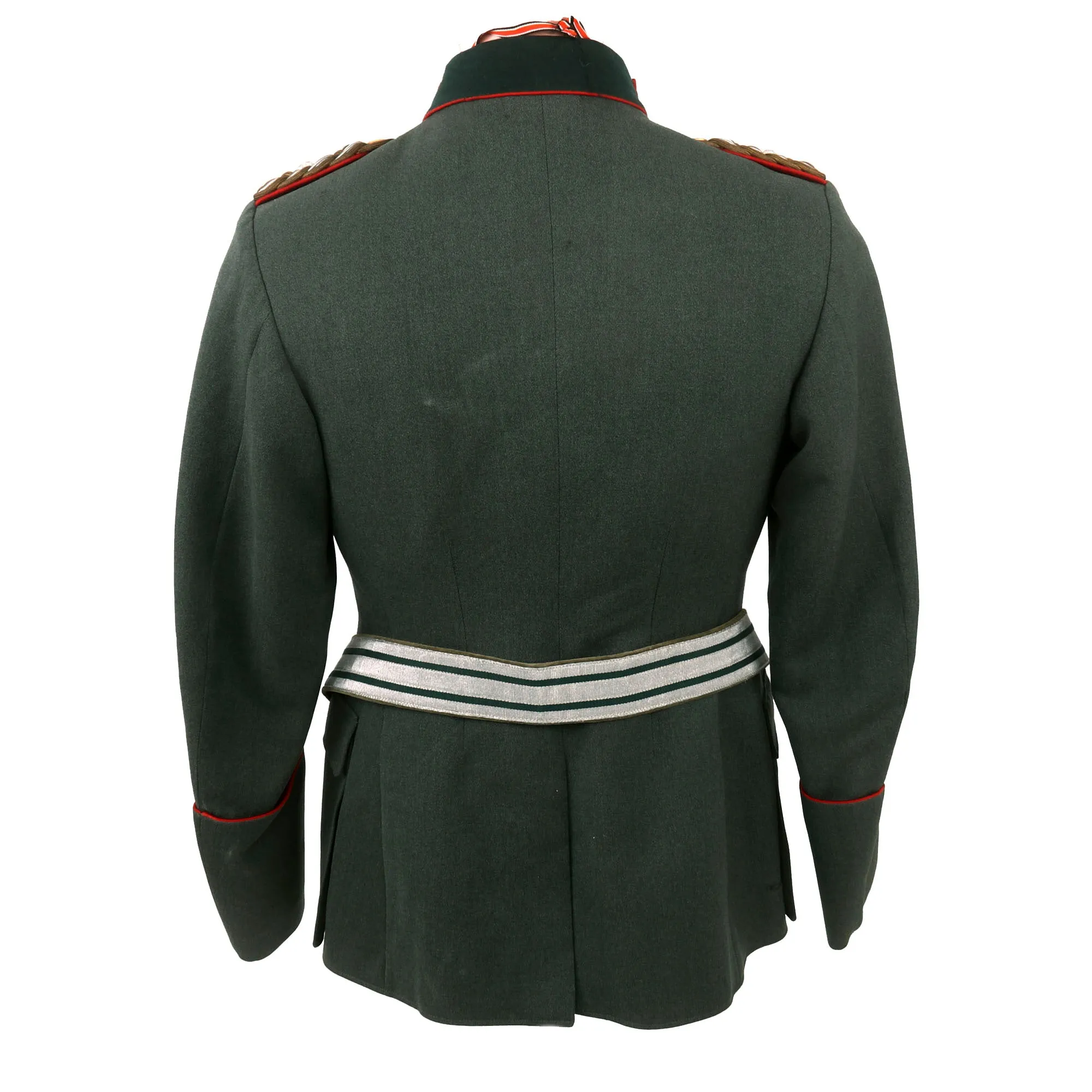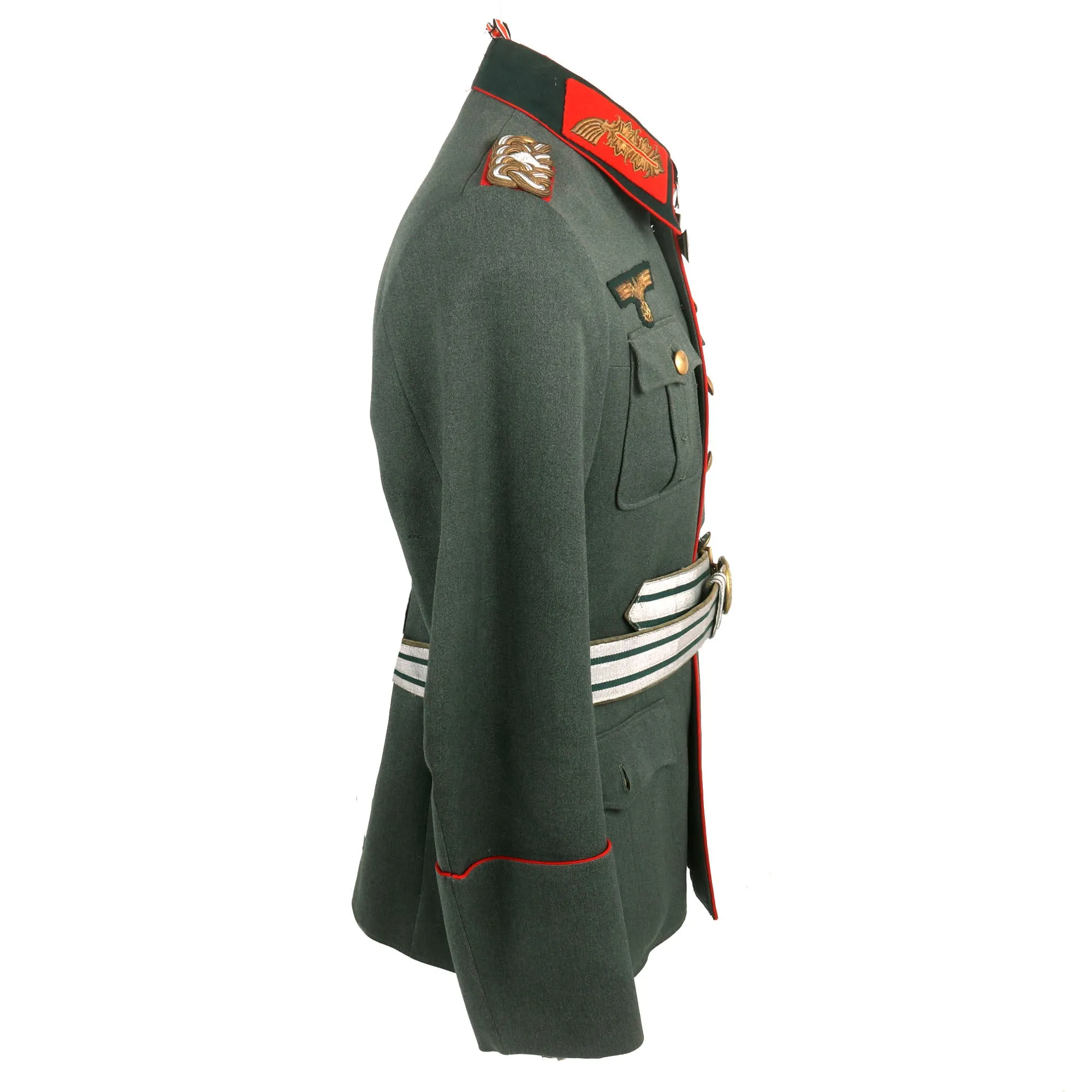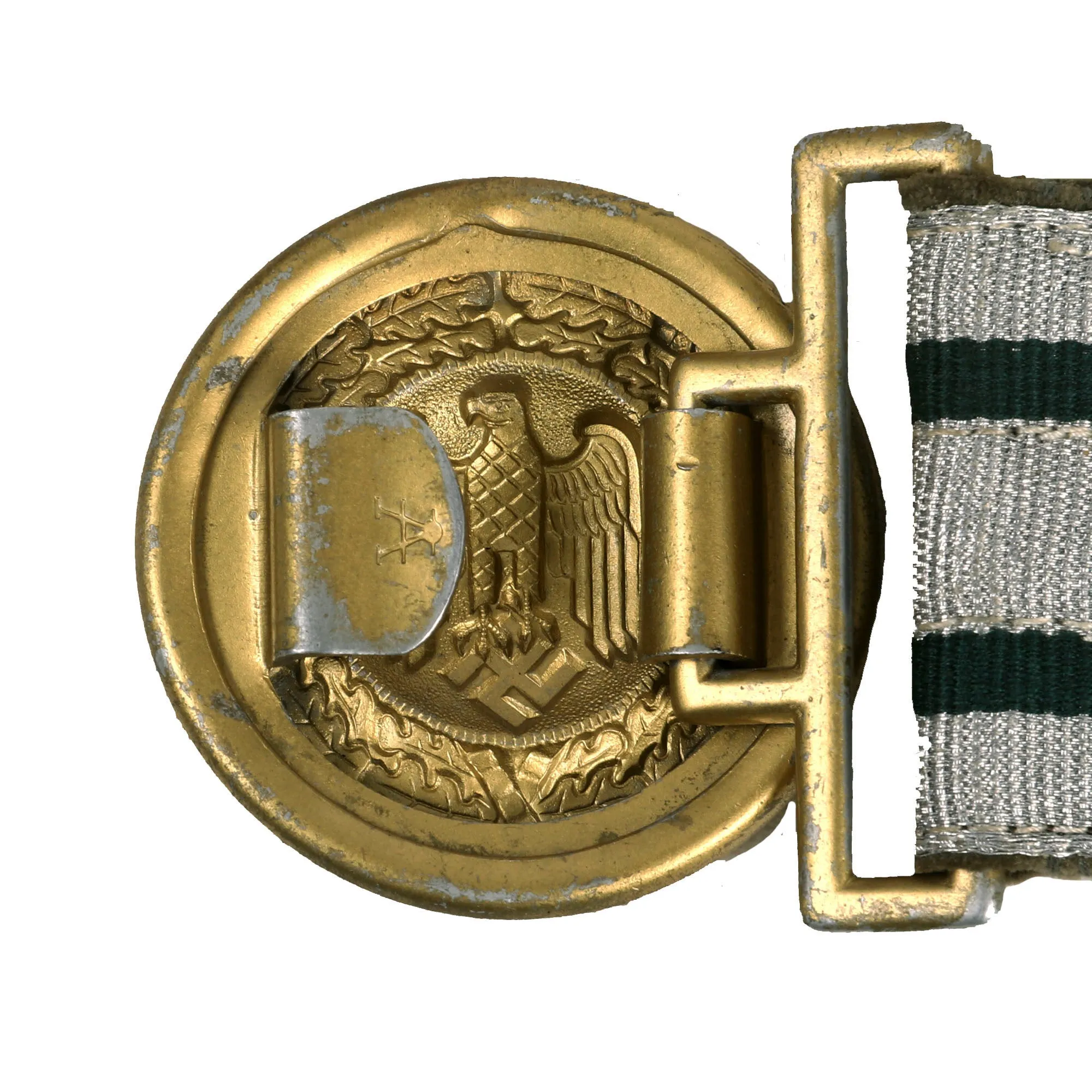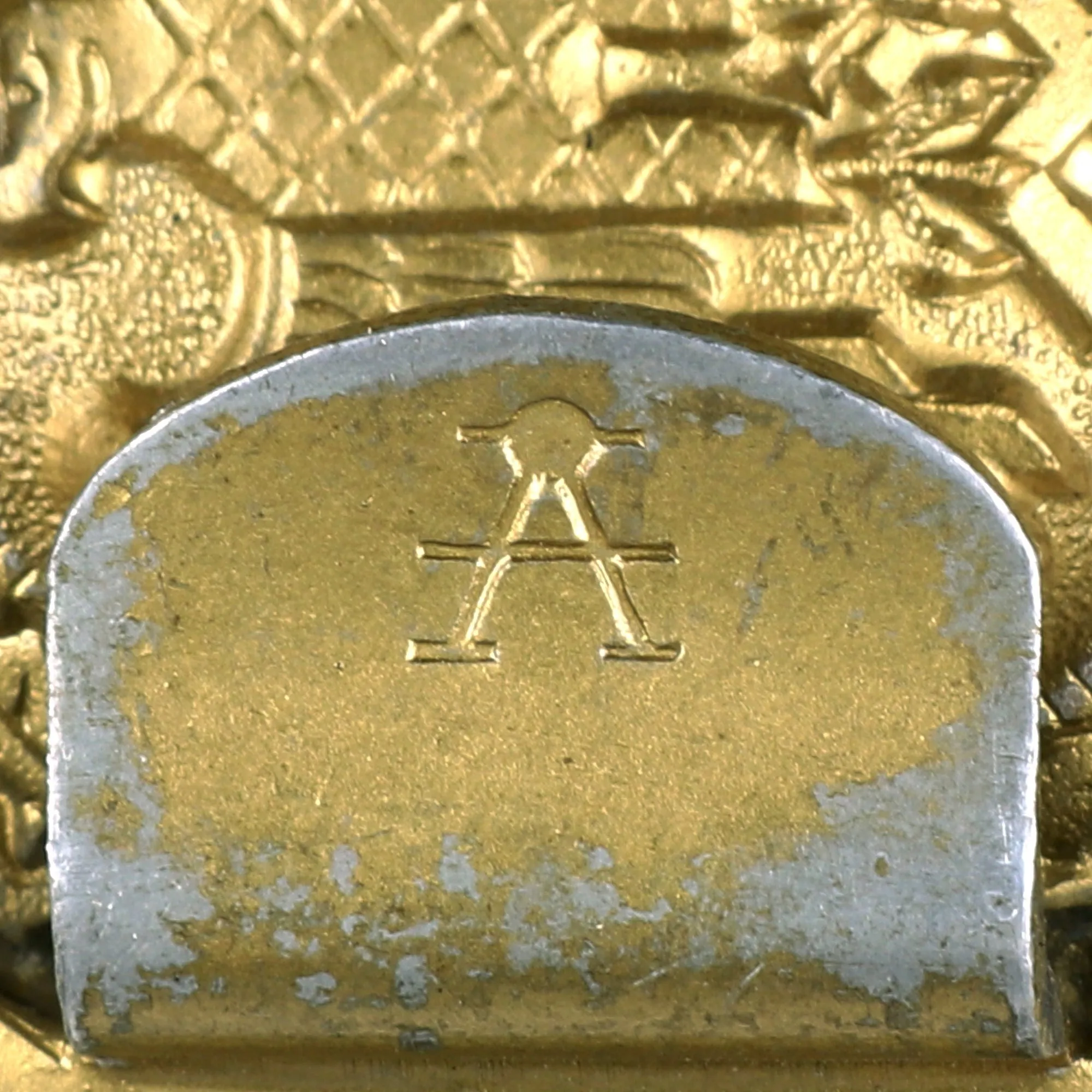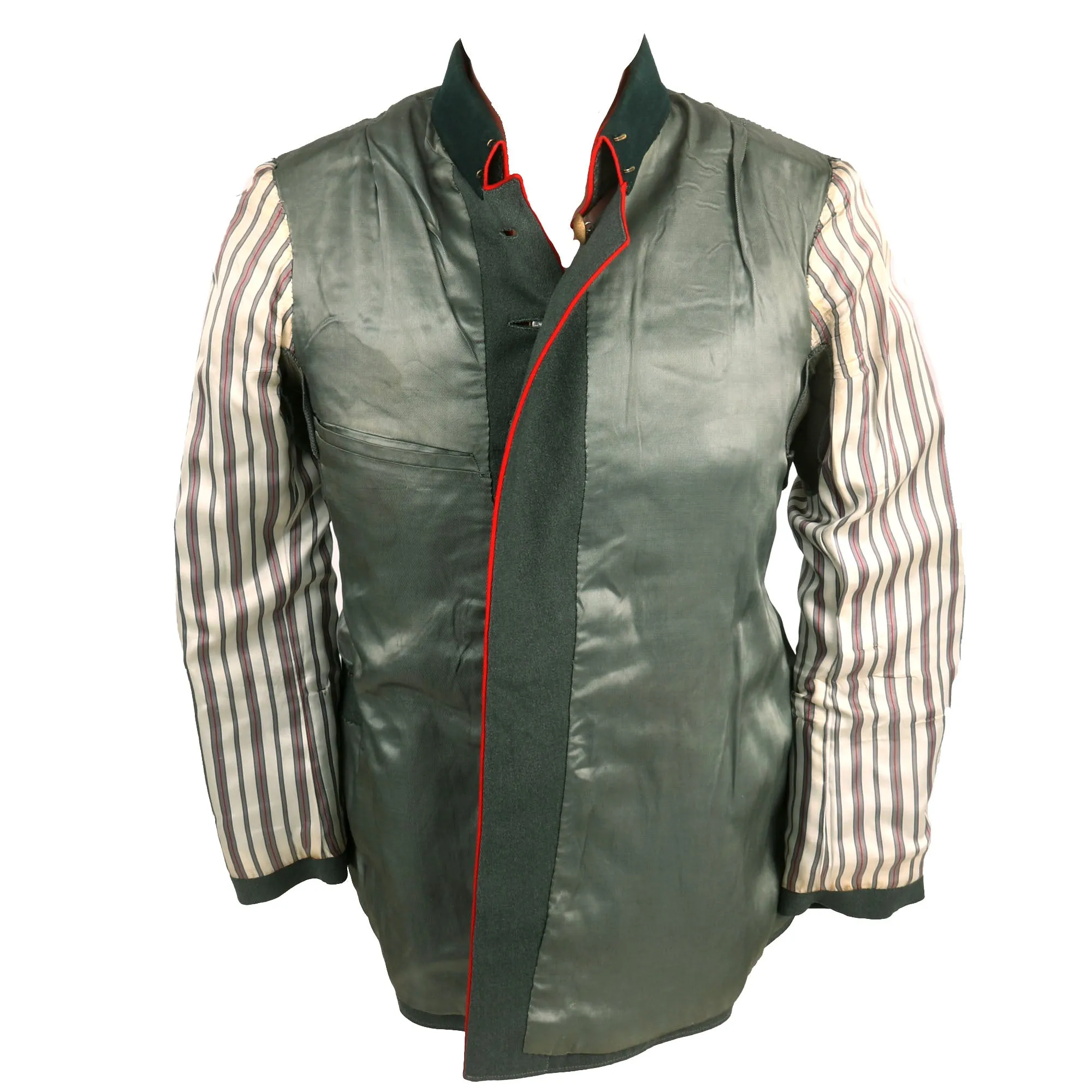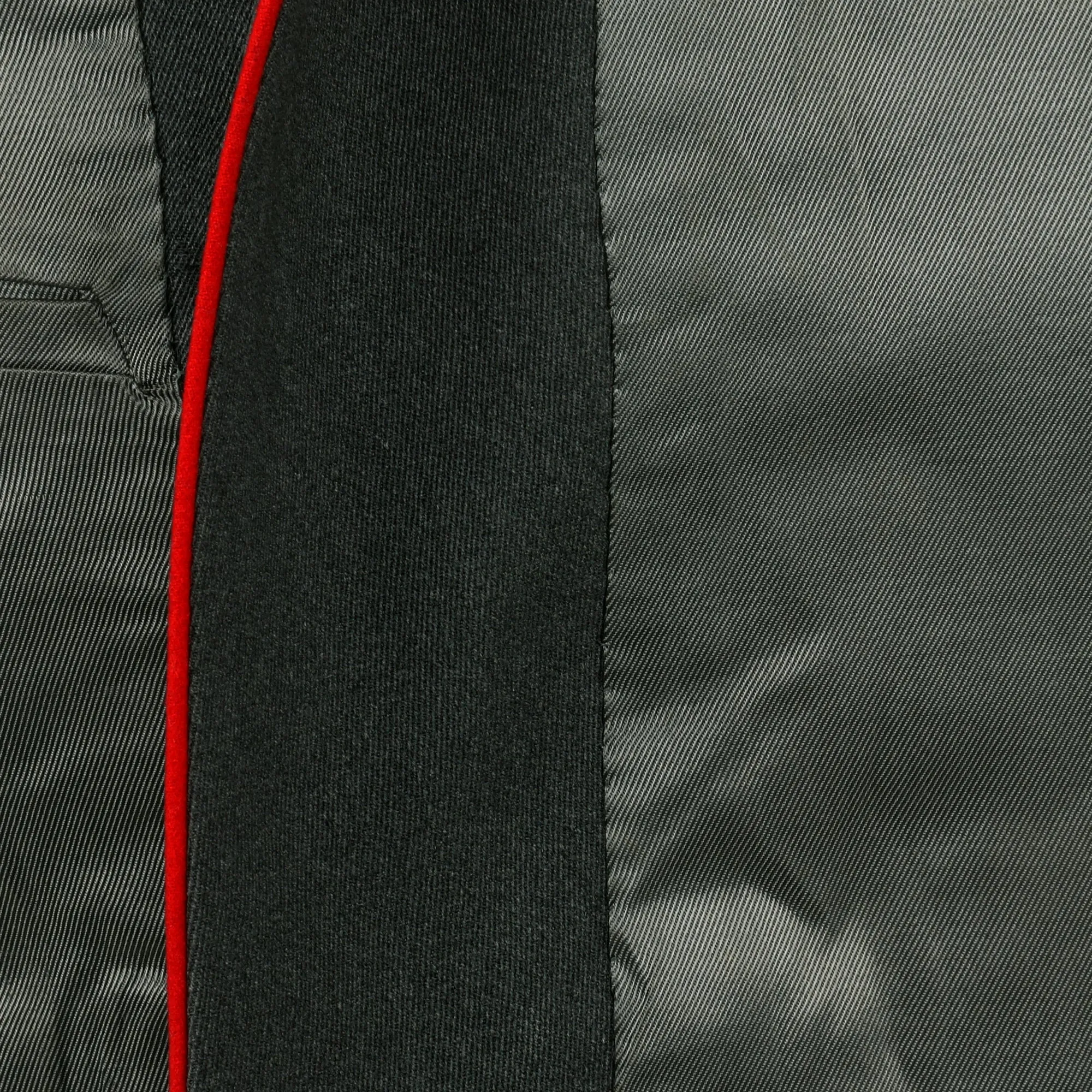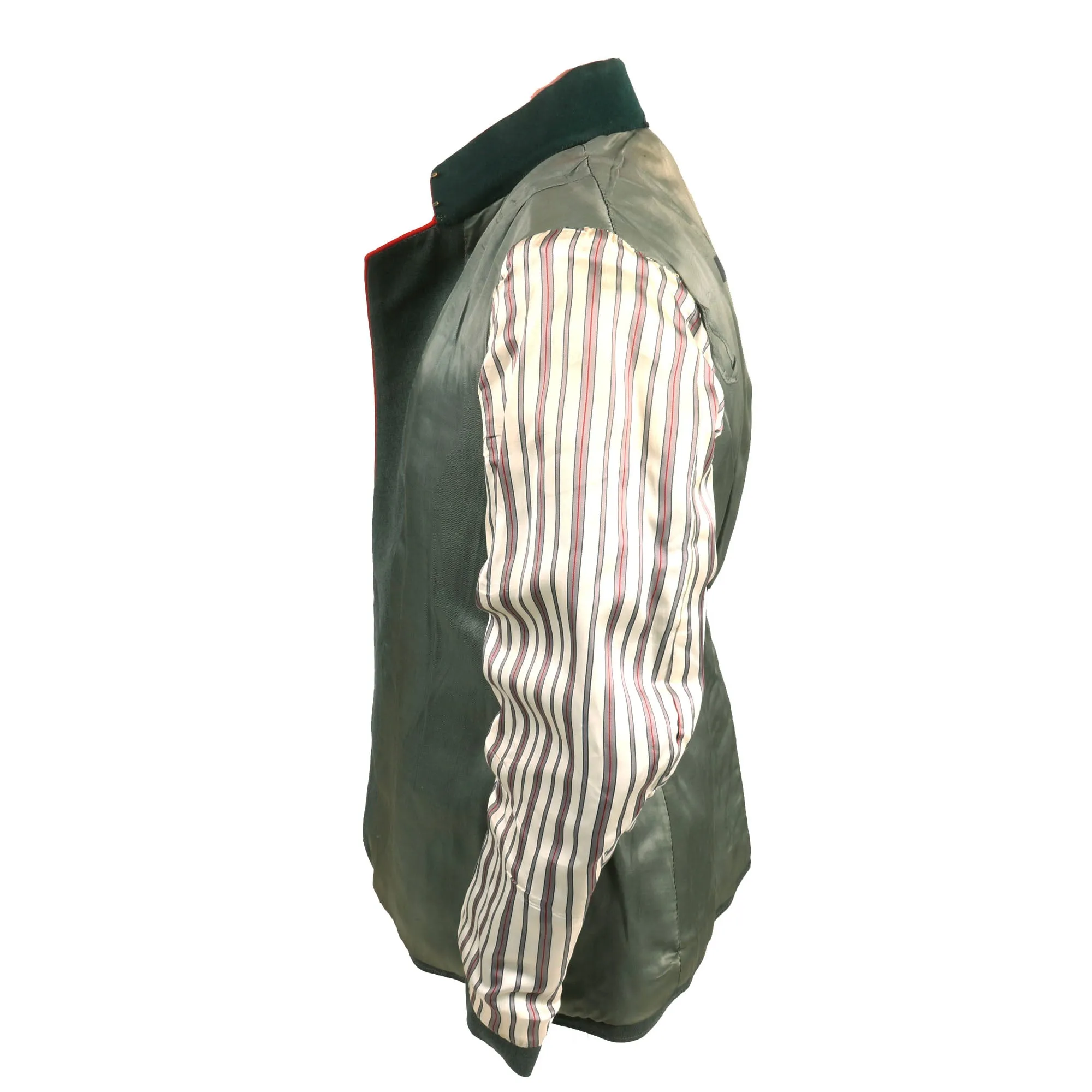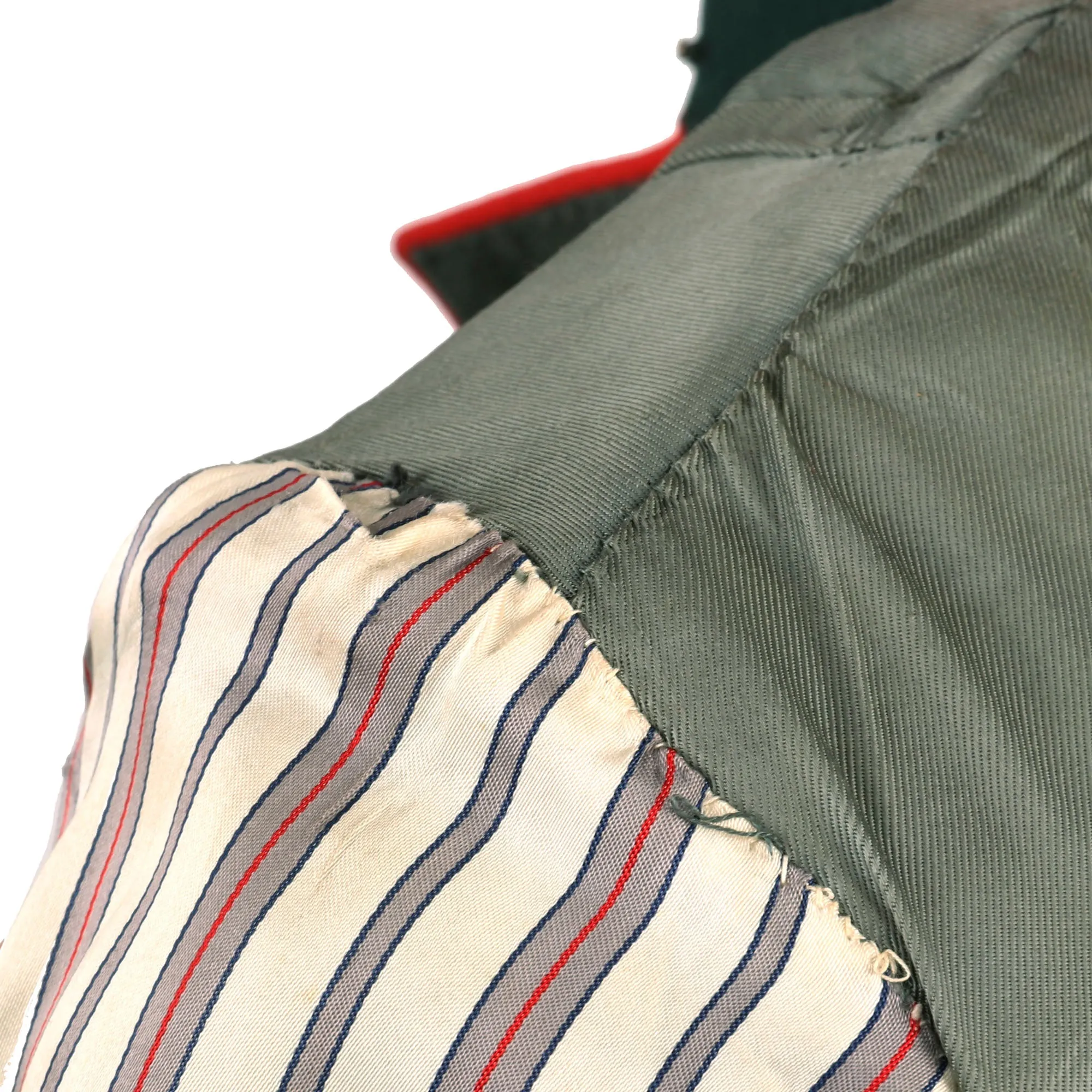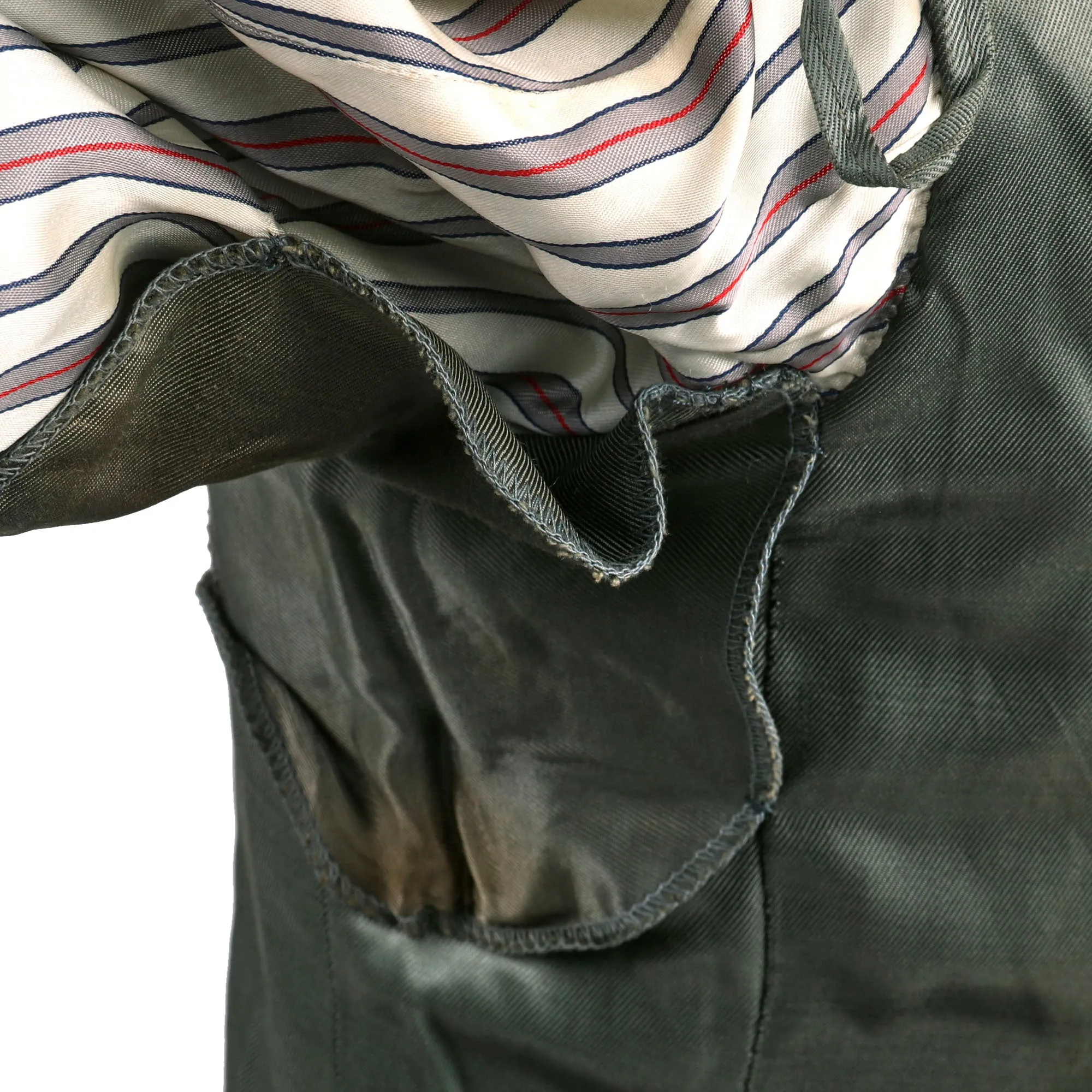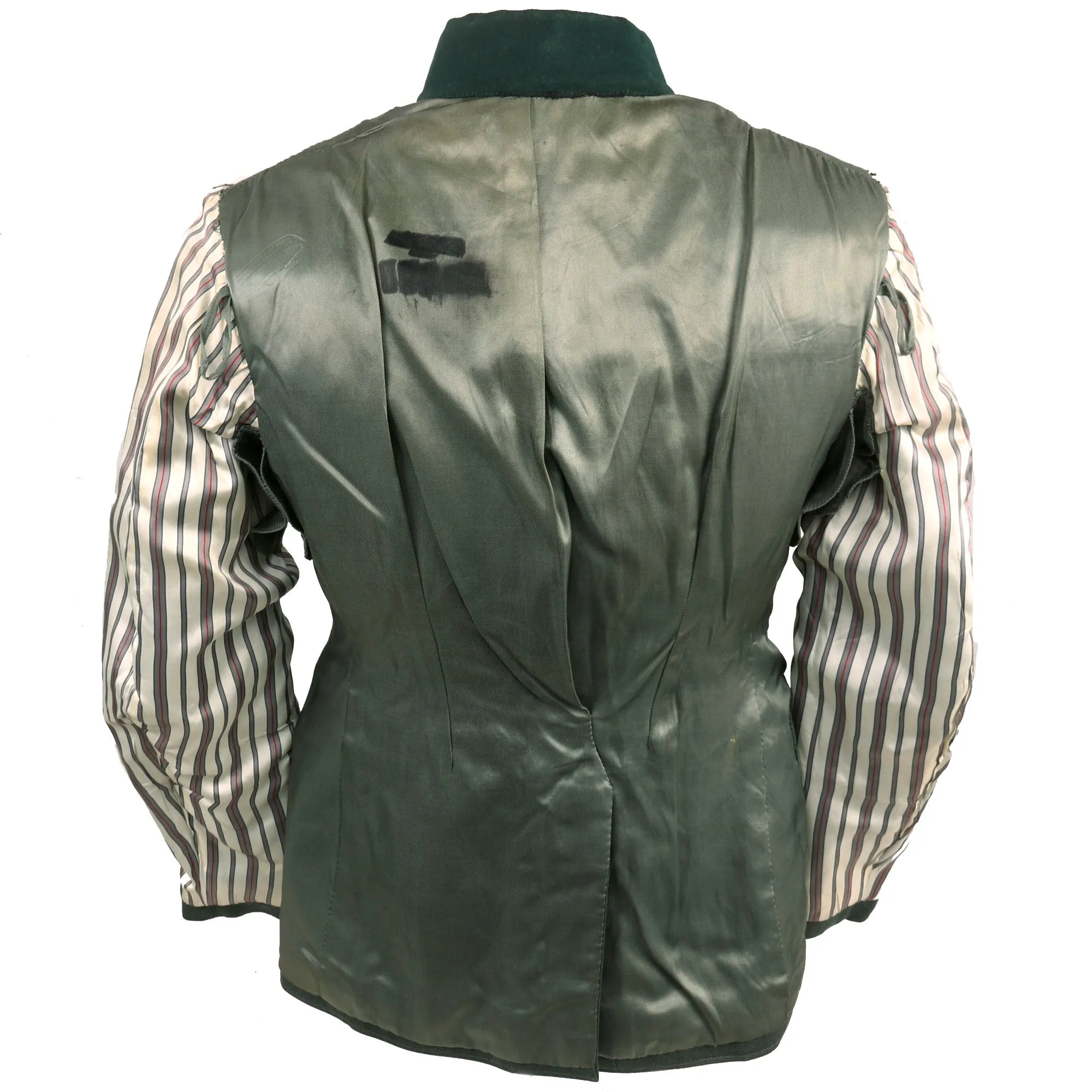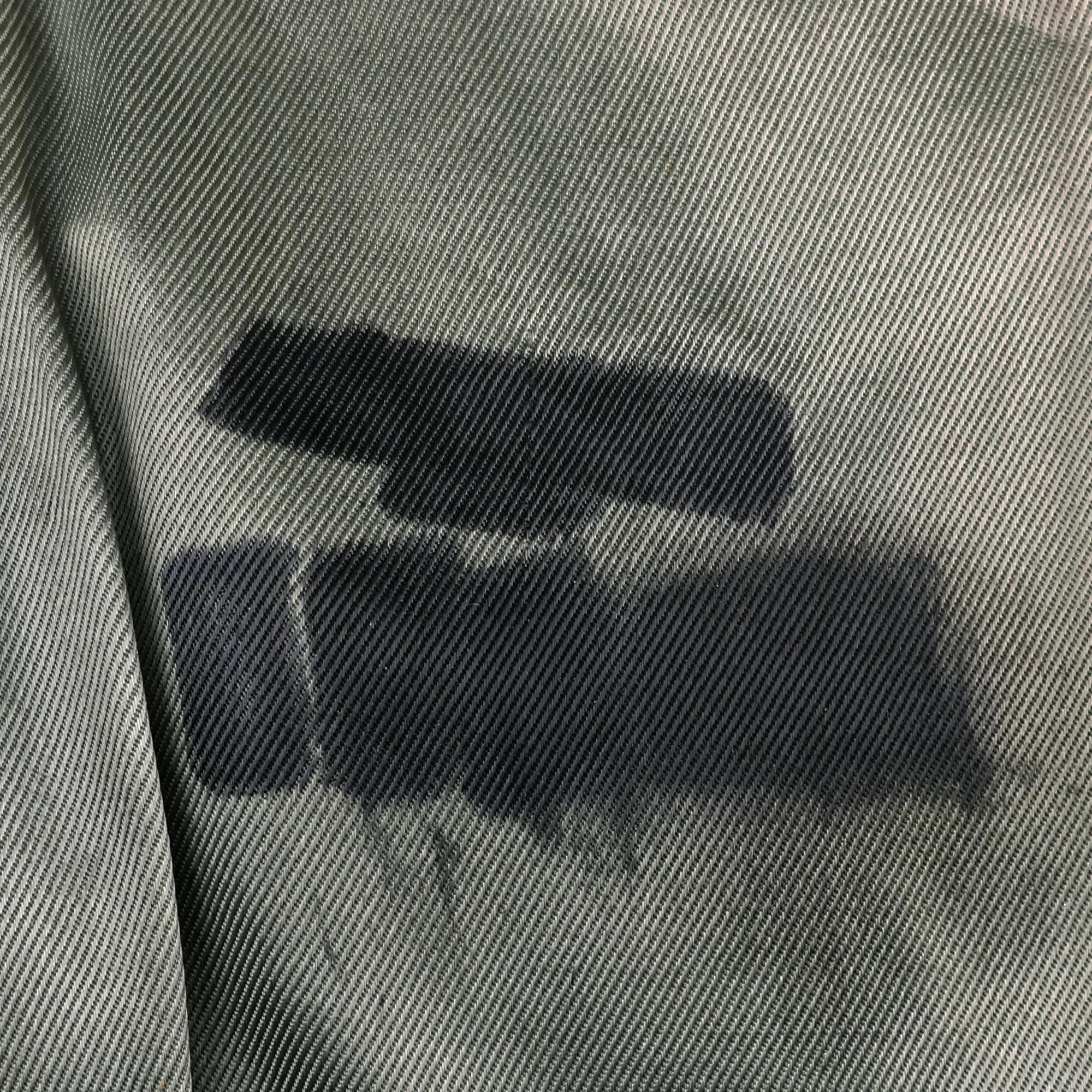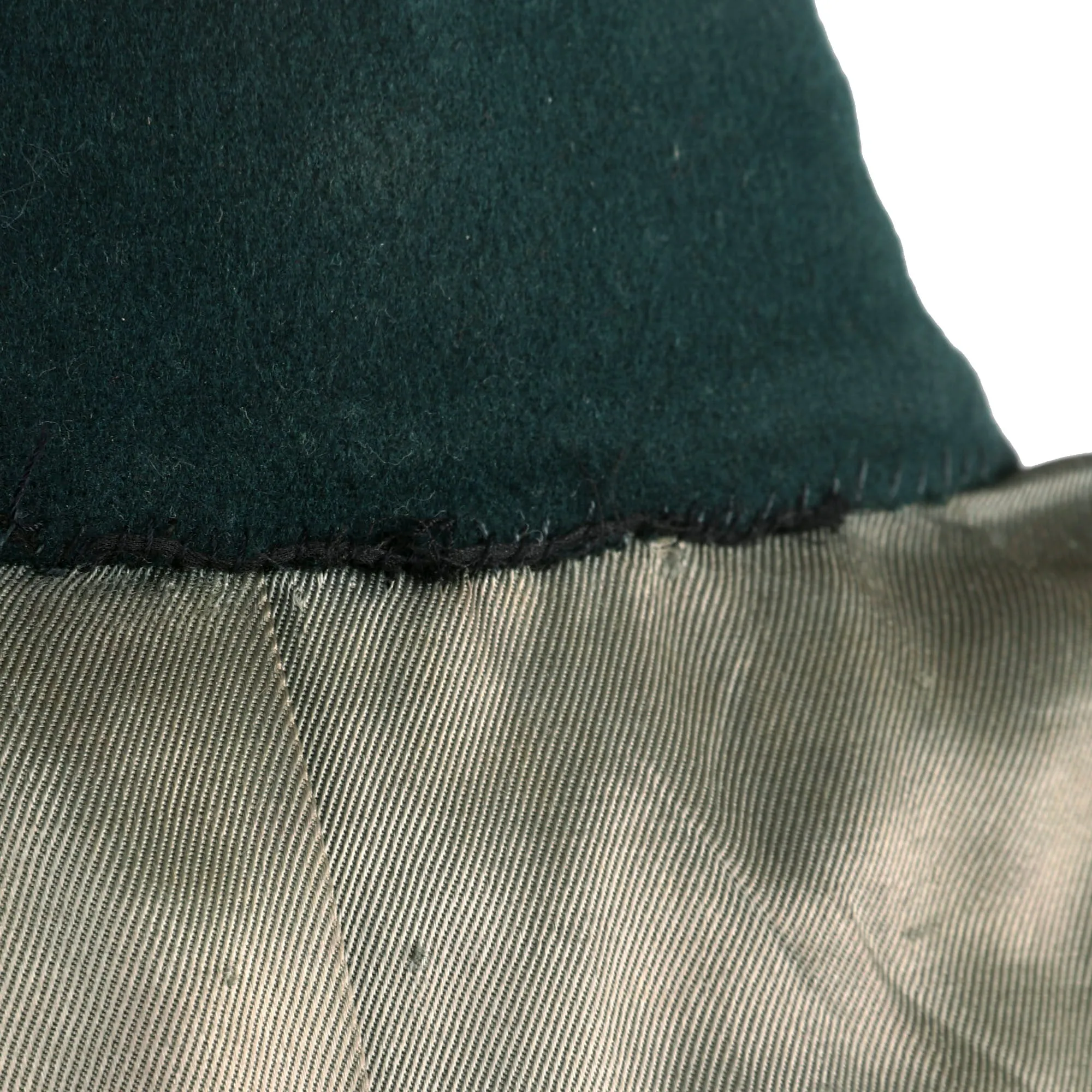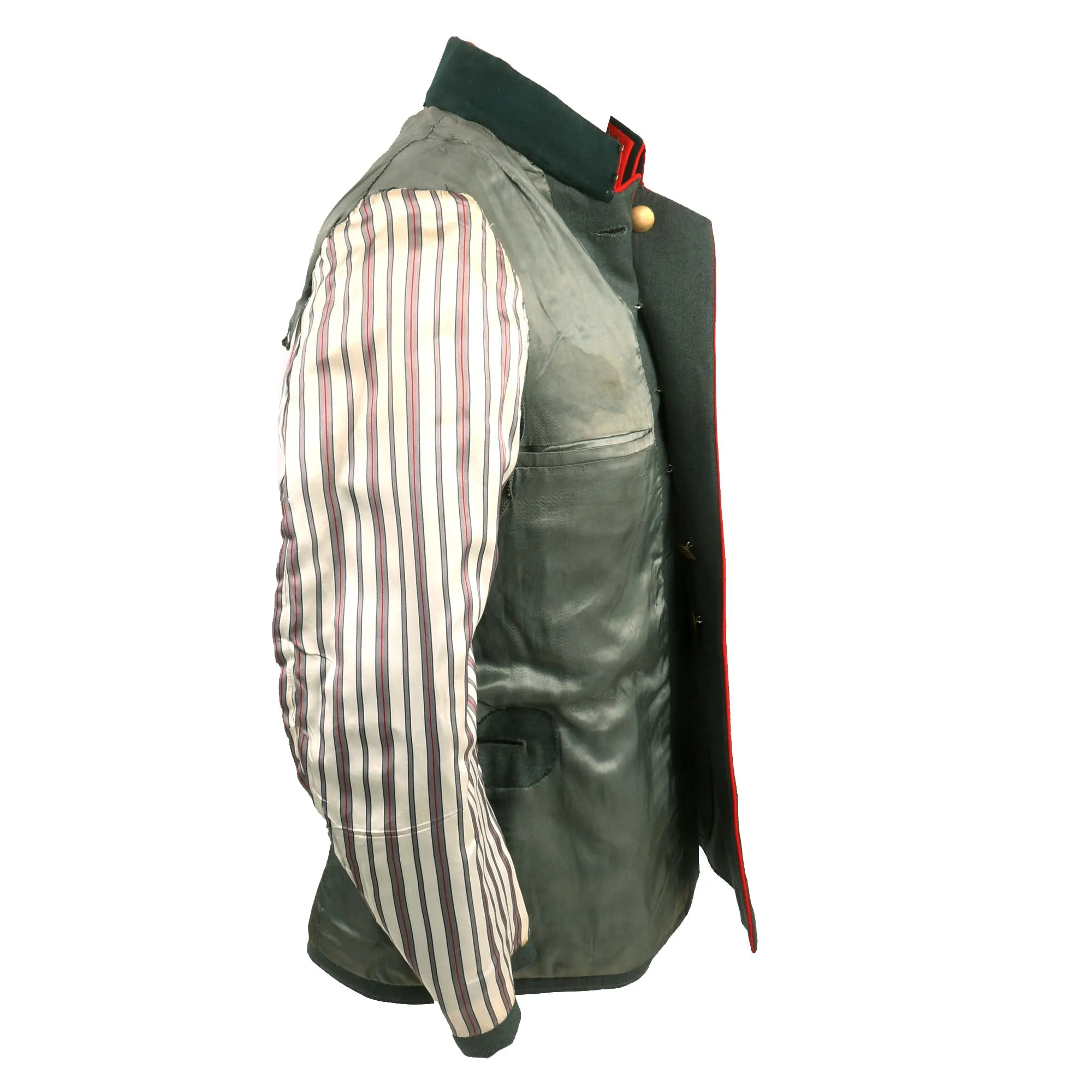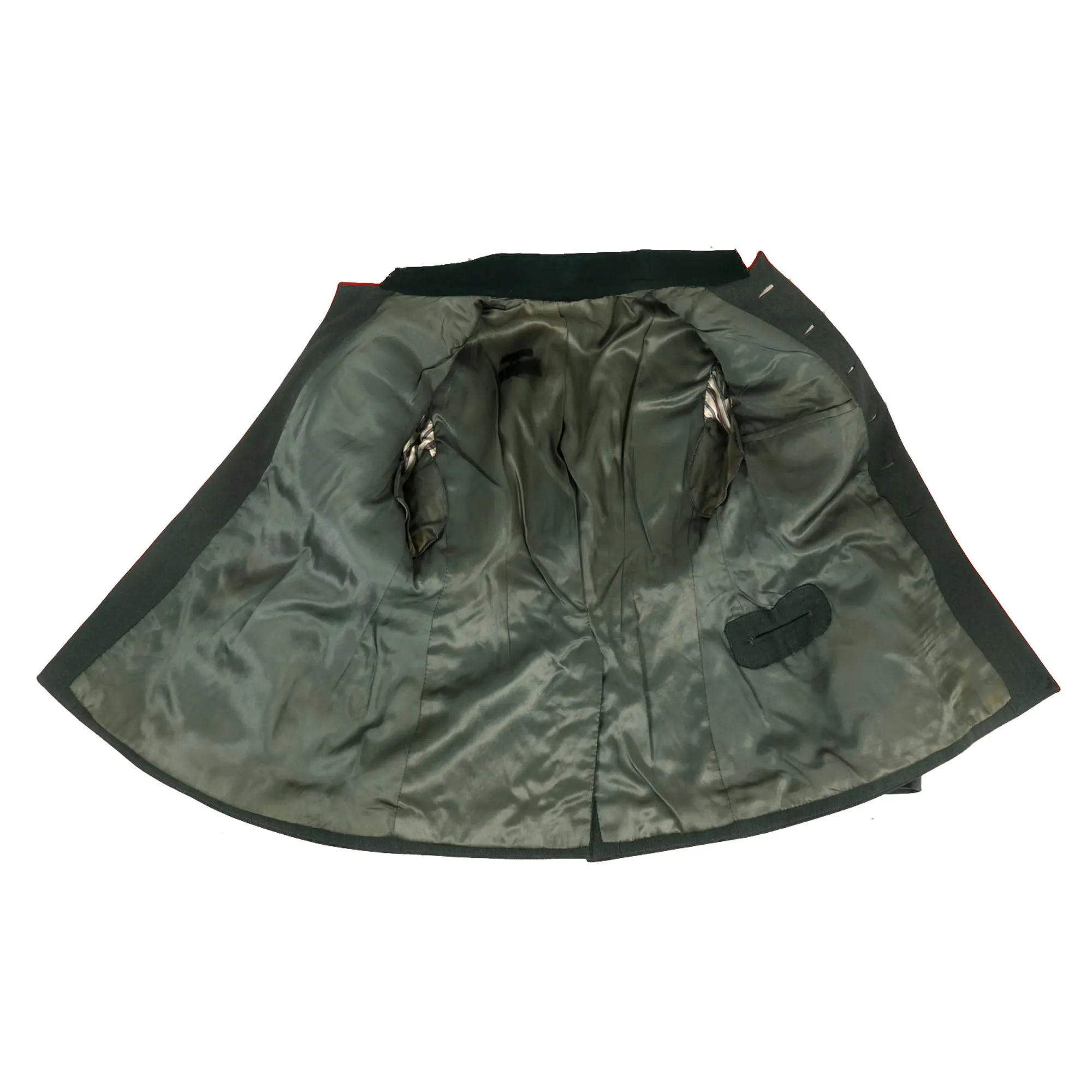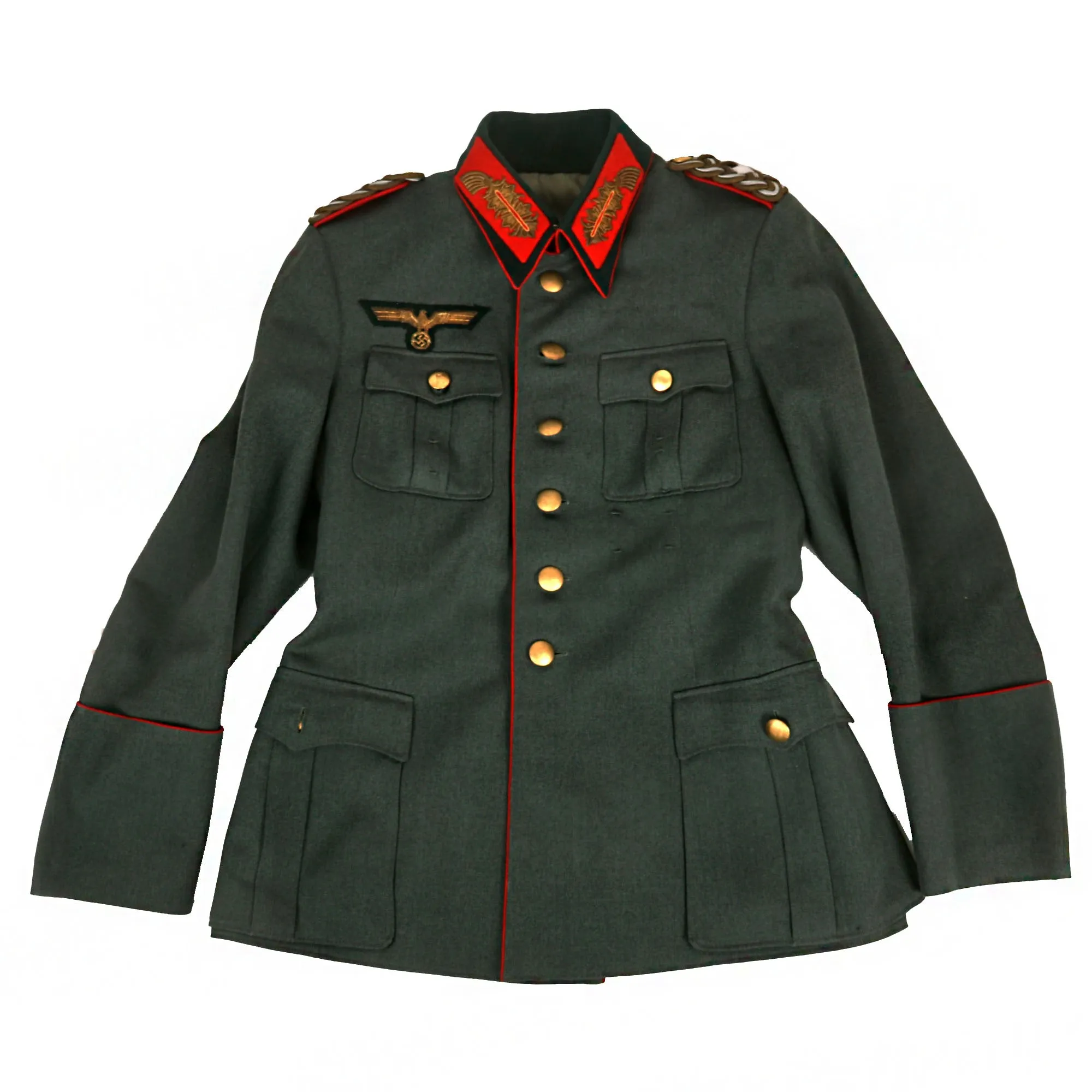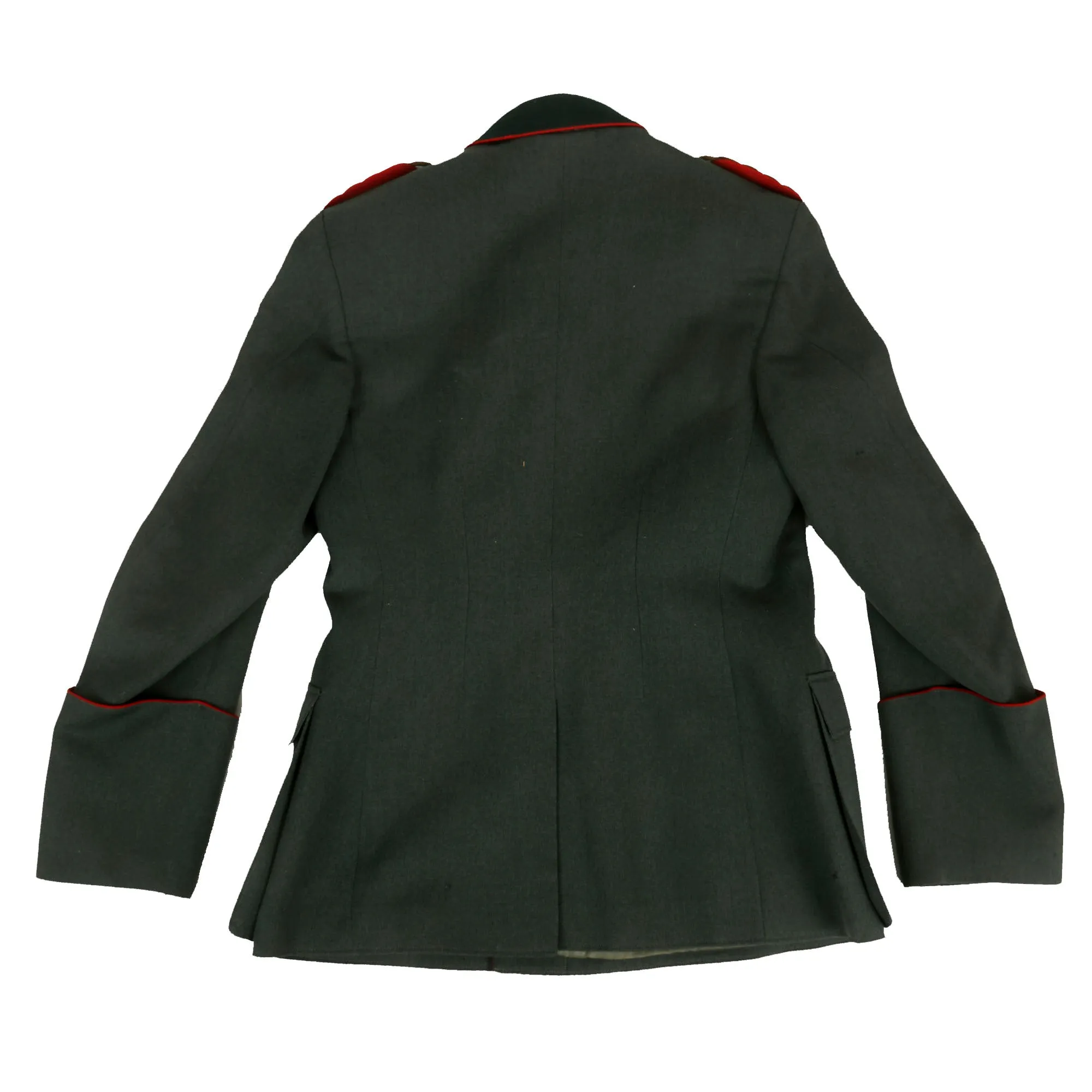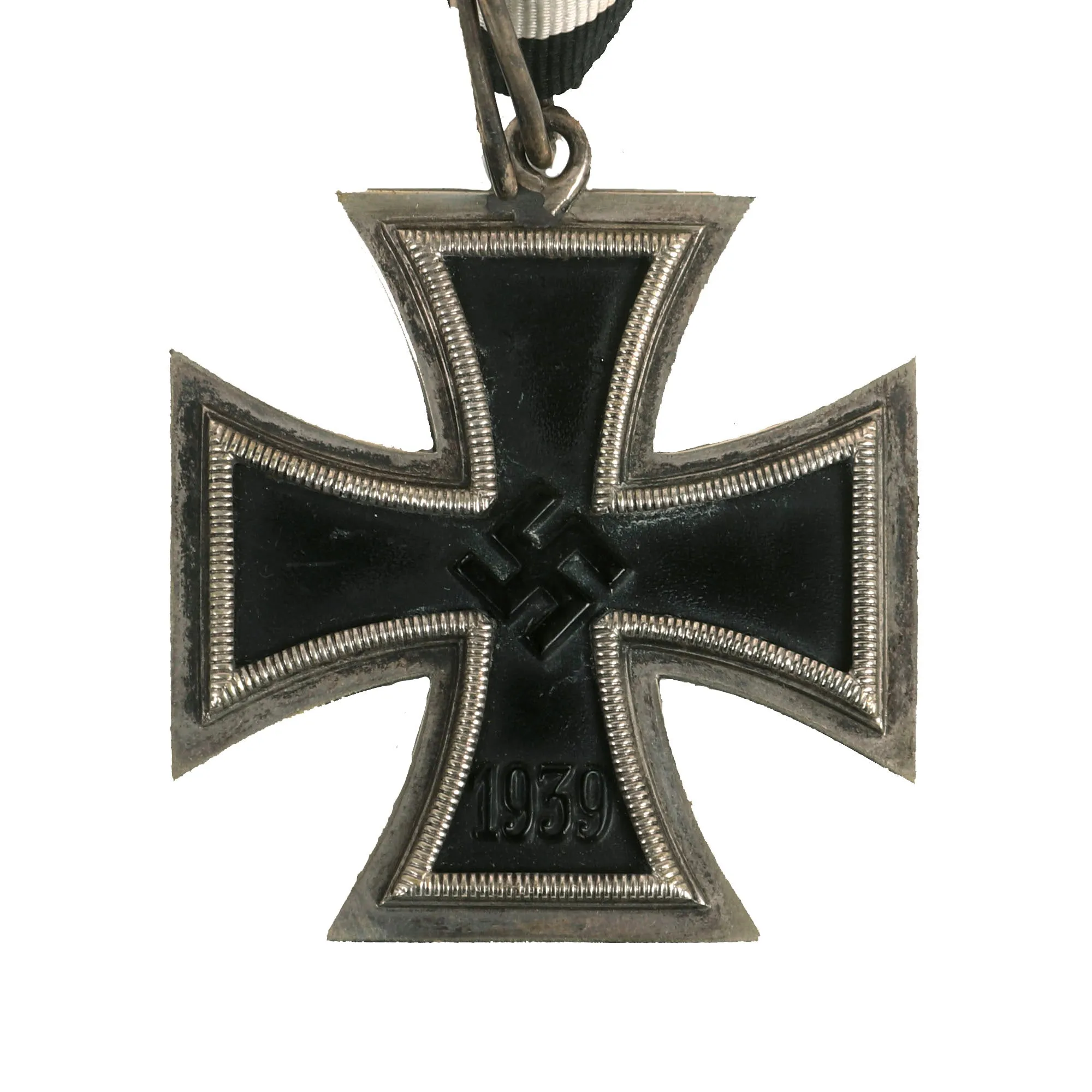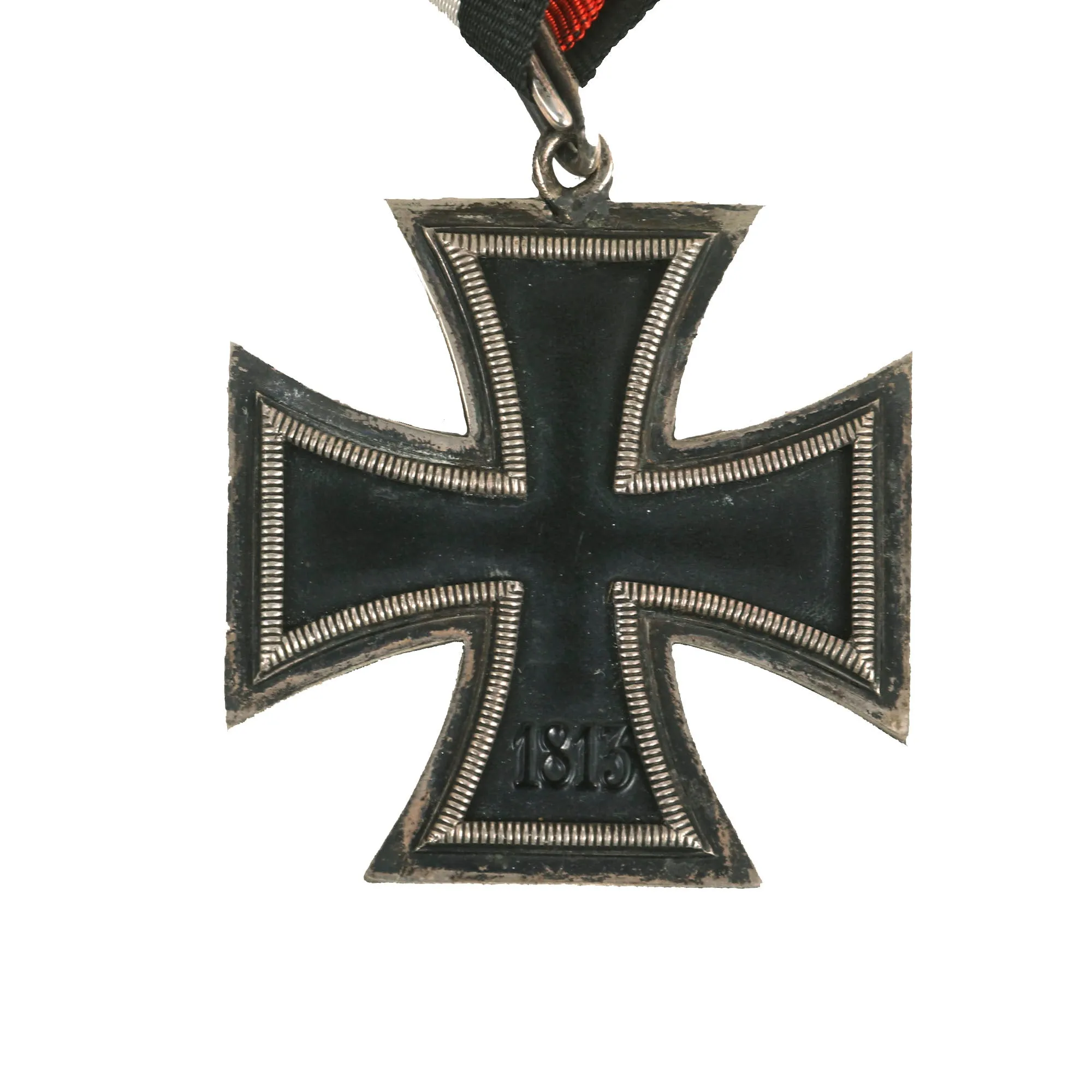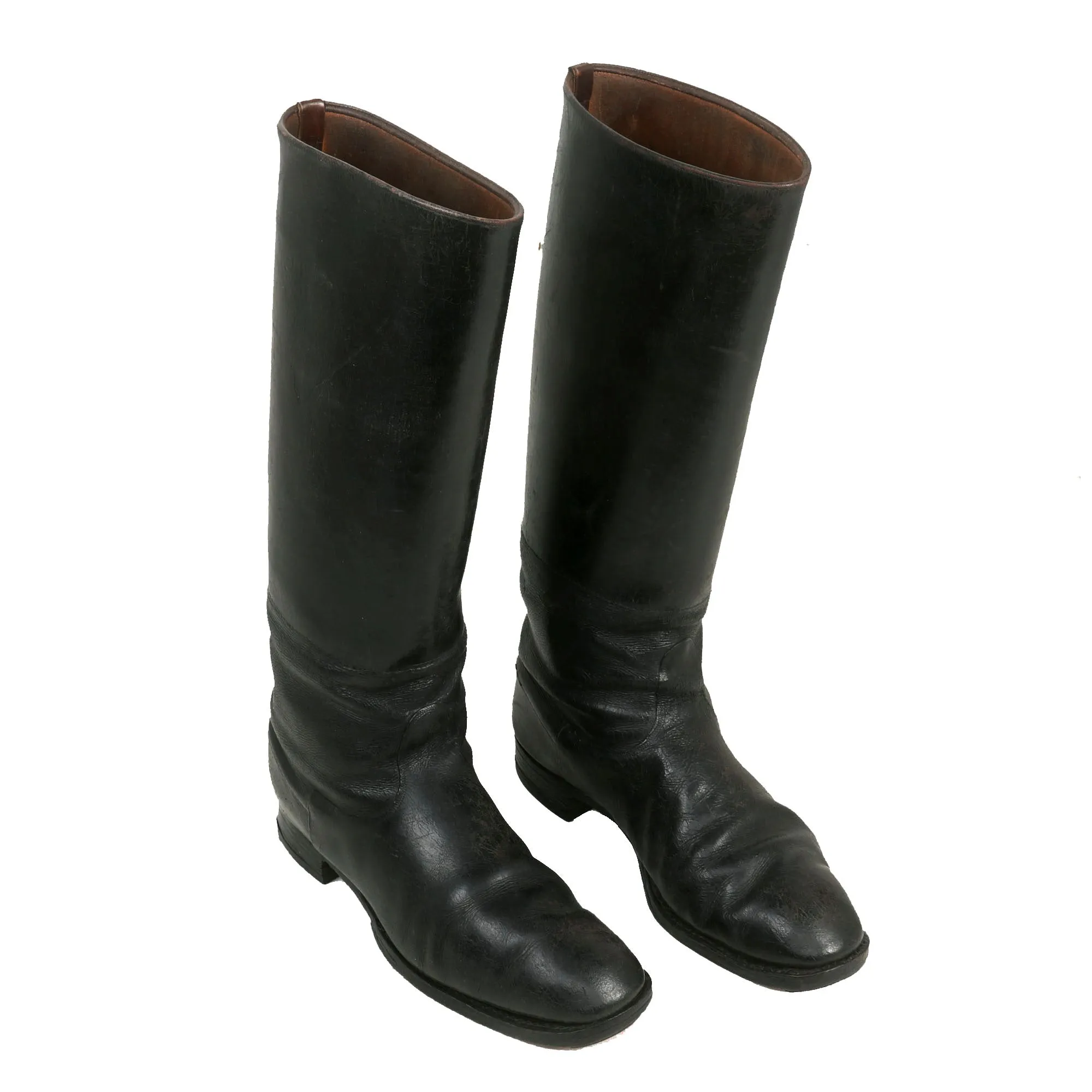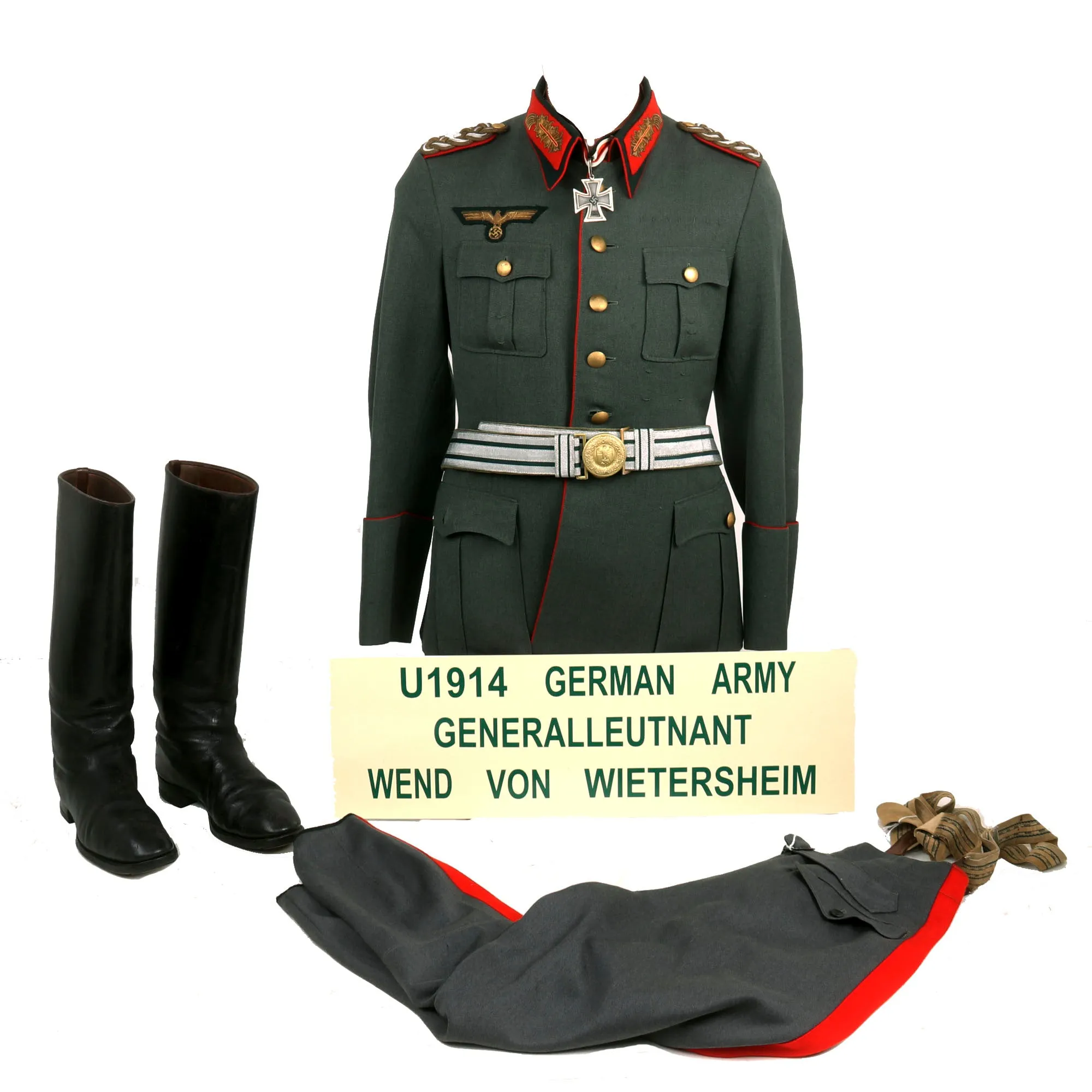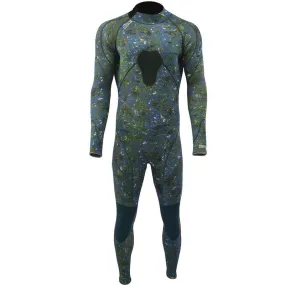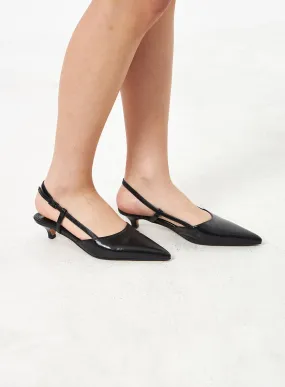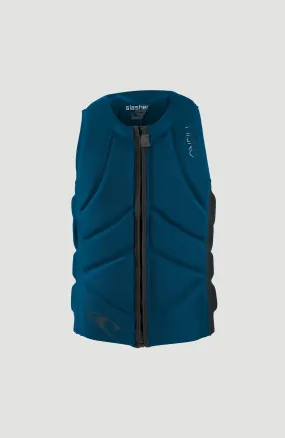Original Items: One-of-a-kind set. Wend von Wietersheim (18 April 1900 – 19 September 1975) was a German Generalleutnant in the Heer Army during World War II, who commanded Schützen / Panzer-Grenadier Regiment 113 and later the 11. Panzer-division during his WWII service. Originally an Major at the beginning of the war, he eventually rose to the rank of Generalleutnant (Major General) when commander of the 11th Panzer Division. He was a recipient of the Knight's Cross of the Iron Cross with Oak Leaves and Swords (Third Degree), as well as many other prestigious awards.
This wonderful German WWII Named Uniform Set came to us from the American Armoured Foundation, Inc. Tank and Ordnance Memorial Museum. The AAF Tank Museum was a living memorial dedicated to the Tank and Cavalry soldiers of the world. Before 1981 some of the artifacts that make up the AAF Tank Museum was a private collection belonging to Mr. William Gasser. Mr. Gasser felt that his collection would be beneficial in educating present and future generations to the sacrifices made and the technologies gained during war. Therefore, in 1981 the AAF Tank Museum was established as a non-profit charitable organization, and Mr. Gasser's donated his private collection to the Tank Museum. Mr. Gasser is still active as Volunteer Director and Curator of the Tank Museum and his knowledge of military history has been a great asset to the museum. Unfortunately after 20 years of operation it had to close its doors, which is when this set was acquired.
Born 18 May 1900 into the family of a Royal Chamberlain, Wend von Wietersheim joined the Imperial German Army during WWI with the 4th (1st Silesian) Hussars "von Schill" Regiment. He jointed relatively late in the war, and would be awarded several medals for his service, including the Iron Cross 1914 Second Class and Silesian Eagle wards. He would later continue his military service as a member of the Reichswehr under the Weimar republic, being promoted to Leutnant in 1919. He was a career soldier, and continued his service after the NSDAP takeover of Germany. He was well-decorated, and the following is a partial list of awards we have been able to locate, along with the dates they were bestowed, if available:
● Iron Cross (1914)
- 2nd Class (5 April 1919)
● Silesian Eagle (2nd and 1st Class)
● Cross of Honor for Frontline Fighters with Swords
● Iron Cross (1939)
- 2nd Class (spange - 1 October 1939)
- 1st Class (20 May 1940)
● Panzer Battle Badge in Silver
● German Cross in Gold (24 December 1941)
● Eastern Front Medal (Ostmedaille)
Most notably, he was awarded the Knight's Cross of the Iron Cross on 10 January 1942 as Oberstleutnant and commander of Schützen-Regiment 113 (Later Panzergrenadier Regiment 113). This was awarded for outstanding leadership during heavy defensive fighting west of Kalinin when his unit was attacked by superior Soviet forces. A Soviet breakthrough here would have resulted in their recapture of an important railway bridge over the Volga. Wietersheim personally gathered up his scant reserve forces and led them into a counterattack, which successfully sealed off the Soviet break-in points.
He would subsequently be awarded the Oak Leaves (Eichenlaub) device on 12 January 1943 as an Oberst and commander of Panzergrenadier-Regiment 113, and was the 176th person to receive the Oak Leaves. A newspaper article describes why he received this award:
“Oberst von Wietersheim was ordered to launch a counterattack with his Kampfgruppe whilst serving in the Toropez area at the end of November [1942]. He thrust forward when a favourable opportunity presented itself, throwing back the far numerically superior Soviets in the process and thereby eliminating the imminent danger of a hostile breakthrough.”
Later on 26 March 1944 as Generalmajor and commander of the 11. Panzer-Division, he would be awarded the Swords (Schwertern) device, the 58th to receive this award, which was the 3rd Degree of the Knight's Cross. This was awarded for the outstanding leadership of his 11. Panzer-Division during the battles on the southern sector of the eastern front throughout late 1943 and early 1944. This is one of the few times we have items from a recipient of the Ritterkreuz mit Eichenlaub und Schwertern, and items from such individuals are very hard to come by.
It should also be noted that due to his long service he would have qualified for the Wehrmacht Long Service awards, and other awards not listed. There is no medal bar on this uniform, but there are numerous thread loops where it would have been, as well as additional loops on and under the pockets. The uniform is however fitted with a "Field Upgraded" Knight's Cross (an EKII with Ribbon) to take place of the Knight's Cross.
The lovely M36 uniform tunic in this set was made for von Wietersheim in December of 1943 when he was commanding the 11th Panzer Division, shortly after he was promoted to Generalmajor. It is a lovely bespoke example, still bearing a clear maker label inside the left inner pocket, which reads:
Adolf Kretschmann
Weimar
-------------------
Herr GEN. MAJ. W. v. WIETERSHEIM
No. 233 ..... Datum I. DEZ. 43
This indicates that when von Wietersheim was promoted to Generalleutnant on 1 July 1944, he would have had to add the rank pip to his shoulder insignia, or had them replaced outright.
The tunic is really a great example of a private purchased Wehrmacht Heer Generäle Dienstbluse (General Officer Service Tunic). It is constructed from a fine quality field-gray "whipcord" wool woven exterior, with a rayon faux silk blended gray green interior lining. The sleeves are lined with the usual white rayon with colored stripes. The collar is constructed of flaschengrün (dark bottle-green) wool, and is adorned by a set of General grade collar tabs, known as alt-Larisch or Arabesque style, which were used for all General ranks below Feldmarschall. These have the correct red backgrounds with gold bullion embroidery, which has oxidized over the years. The celleon central threads are still bright yellow.
The tunic conforms well to the M36 pattern, having 4 pleated pockets on the front with scalloped flaps. All of the pebbled buttons are the correct gold color for a General officer, and all look to be marked EXTRA FEIN on the rear. They do show some wear and oxidation
Each shoulder is decorated with the sew-on style Generalleutnant rank shoulder boards. They are both constructed out of a row of interwoven silver and gold bullion strands in the typical Russian braid style in an interlocking weave pattern ending at a pebbled gilt metal (non-magnetic) button. There is a single rank pip installed on each, correct for a Generalleutnant, equivalent to a U.S. Army Major General. The pipes are bright silver, matching the silver bullion, while the gold bullion of the insignia has oxidized a bit.
On the right breast is a fine quality gold bullion eagle, constructed of rolled, twisted, and flat hand embroidered gilt stitching with celleon retaining threads, placed onto a dark bottle green wool backing. It is neatly stitched to the outer layer of fabric, however the bullion has oxidized quite a bit, now displaying a somewhat oxidized patina, while the celleon threads are still bright yellow.
Secured around the tunic as shown in the photographs is a lovely German WWII Heer Army General's Dress Brocade Belt with Buckle, marked with the "Barred A" trademark of F. W. Assmann & Söhne of Lüdenscheid, a famous maker. The belt is in excellent condition, and has the correct gold washed buckle and end clip, which is sewn on, so it was definitely made as a generals belt.
Along with the tunic there is a lovely pair of General's breeches / jodhpurs in the correct stone gray (steingrau) color, with red stripes on the side, which comes with the correct suspenders. They are in very good shape, and definitely period correct, though they do not have any markings on the inside that we can find. The suspenders show some lovely period discoloration and wear.
Finishing out the set is a lovely set of German WWII officer's tall jackboots, which are in very good condition, and look to be a matched pair! They still retain their internal pull loops, as well as a leather strap for attaching to the breeches to keep them in place. The heels on both are marked Nordgummi / 65 65, and have metal at the rear to protect them, which also would have given a satisfying "clack" when walking on hard surfaces. They also have metal under the toes for the same purpose. The boots are about 16 1/2 inches tall, and are 11 inches from heel to toe.
Along with the uniform are some great additional items that really flesh out this fantastic set, and add lots of wonderful research and display potential. These include:
● The original painted metal display placard used when the uniform was owned and displayed by the A.A.F. Tank Museum.
● The original information / inventory listing from the A.A.F. Tank Museum, which gives a very detailed history of von Kessel's military progression during the interwar years and during the war.
Photographs of Wend von Wietersheim are relatively easy to find on the internet, and the one shown in the pictures is shown for illustrative purposes only, and is not included.
We very seldom get uniform sets with such great provenance and research potential. This could become the centerpiece of your WWII collection. Ready to research and display!
Approximate Measurements:
Collar to shoulder: 9"
Shoulder to sleeve: 24.5”
Shoulder to shoulder: 14.5”
Chest width: 17"
Waist width: 17"
Hip width: 21"
Front length: 29"
Pants:
Waist: 17.5"
Inseam: 24"
More on German Uniform Tunics
Terms such as M40 and M43 were never designated by the Wehrmacht, but are names given to the different versions of the Model 1936 field tunic by modern collectors, to discern between variations, as the M36 was steadily simplified and tweaked due to production time problems and combat experience.
Field Tunic (Feldbluse) Model 1936
When the NSDAP came to power in early 1933 the Reichswehr, the armed forces of the Weimar Republic, were near the end of a two-year project to redesign the Army Feldbluse (field-blouse). Beginning in that year the new tunic was issued to the Reichsheer and then the rapidly growing Wehrmacht Heer, although minor design changes continued to be made until the appearance of the standardized Heeres Dienstanzug Modell 1936. The M36 tunic still retained the traditional Imperial and Reichswehr uniform color of grey-green "field gray" (feldgrau) wool, but incorporated four front patch pockets with scalloped flaps and pleats (on Reichswehr tunics the lower pockets were internal and angled). The front was closed with five buttons rather than the previous eight, and the collar and shoulder straps were of a dark bottle-green instead of the Reichswehr grey. Compared to the Weimar-era uniforms the skirt of the feldbluse was shorter and the tailoring was more form-fitting due to Germany's adoption of mechanized warfare: soldiers now spent much time in the confined space of a vehicle and a shorter jacket was less likely to pick up dirt from the seats. It also included an internal suspension system, whereby a soldier could hang an equipment belt on a series of hooks outside of the tunic. These hooks were connected to two straps inside the lining, which spread the weight of equipment without having to use external equipment suspenders. The M36 was produced and issued until the very end of the war, though successive patterns became predominant.




